|
Despite Taiwan being a tropical island, it also has a surprising amount of sand dunes. The Guanyin Caota Sand dunes in Taoyuan are Taiwan's longest stretch of sand dunes, over 8 KM in length. They have become a major Instagram selfie location due to being such a unique geological feature so close to Taipei.
Background: The sand dunes at Caota have been forming for thousands of years, thanks to silt being washed into the ocean from the Taoyuan plain from nearby rivers, such as the Shunagxikou River (雙溪口溪). Recently, wicket fences have been placed around the sand dunes to prevent erosion and the spread of sand in unwanted places. Also, in the past few years, many land-based wind farms have been erected here. The dunes are part of Guanyin Coastal Recreation Area, which includes a beach that may or may not ban swimming, but you can wade here, go Stand Up Paddleboarding, or surf. Recently the sand dunes have become a hot spot for Instagrammers, but the area is still usually free of people even on weekends due to the lack of convenient transportation. Hours: 24/7 Price: Free Tours: You can book a tour to the Caota Sand Dunes on KKday here. Hotels near Taoyuan: High end: We have stayed at and recommend the Yuanshan Grand Hotel, once the tallest building in Taiwan and still the most grand (book on Booking.com here, Tripadvisor here, or Agoda here). We also recommend Fullon Hotel which has locations in Tamsui and Fulong near the beach Looking for a hotel? We recommend booking through Booking.com here, which provides the best quality selection of accommodation in Taiwan. Find out where to stay in our Taiwan hotels guide or search for the best hotel deals in Taiwan here. Just to let you know, if you book using the links above, we get some commission at no cost to you. How to get there: By Car: Take Expressway 61 South from Taipei and get off at the Cata Exit (33). There is limited parking on a dirt road near the sand dunes. The way to the sand dunes is not clear, but it is a huge area and hard to miss. If you are looking for car rentals, you can also search Qeeq here, Klook here, or KKday here. You can also check out our car rental guide here. By Scooter: Follow underneath Expressway 61 South from Taipei and get off near the Cata Exit (33). There is limited parking on a dirt road near the sand dunes. The way to the sand dunes is not clear, but it is a huge area and hard to miss. Looking for scooter rental in Taoyuan? You can search on Klook here or KKday here to search for options. You can also check out our scooter rental guide here. By MRT/Bus: You can go to Dayuan MRT station, then take a bus to Guanyin or Xin Village Road. The bus ride should take about 20 minutes. Then it is another 20 minute walk to the dunes. You can also book an MRT travel pass on Klook here. By Bicycle: Cycling is the best way to enjoy Taiwan's landscapes if you have the time and energy. Looking for bicycle rentals in Taiwan? You can use Taiwan's many Youbike bike sharing stations, or search for rentals on KKday here, and search for tours on Klook here. You can also check out our Taiwan cycling guide here. For more information, check out our Taiwan transportation guide here. Map: See below:
0 Comments
Sandiaojiao Lighthouse (三貂角燈塔), also known as the Santiago Cape Lighthouse, marks the easternmost point on Taiwan's mainland. You cannot go inside, but you can enjoy the views from the top of the hill there and the museum inside. Overall, it is a great place to relax and enjoy the coastal views nearby.
Background: The area around Fulong was originally inhabited by the Basay indigenous tribe who has a village and hunting grounds there. In 1626, the Spanish landed near Fulong and renamed the location Santiago (transliterated from Taiwanese as Sandiao 三貂, as in Sandiao Cape). After the Qing colonized Taiwan, many Fujianese fisherman relocated to the area and began to build the iconic stone houses you can see today. The Old Caoling Tunnel was built in 1924 during the Japanese occupation of Taiwan, and is 2,167 meters long. At the time it was built, it was the longest tunnel in Taiwan. The tunnel took 3 years to build due to delays from Malaria, remoteness of the location, and digging accidents killing 11 people and injuring over 300. The tunnel was only one lane wide, too narrow for electric trains, and so was decommissioned in 1985 and lay waste for 22 years. The tunnel was reopened when the Coaling Bicycle Loop was created in 2007, using the old Caoling Tunnel as its main looping point. Sandiaojiao Lighthouse (三貂角燈塔), also known as the Santiago Cape Lighthouse, built in 1935 by the Japanese. You cannot go inside, but you can enjoy the views from the top of the hill there and the museum inside. The Fulong-Coaling-Sandiao Cape- bike route is one of the most biker friendly routes in Taiwan, the roughly 2 hour loop is something that the whole family can enjoy. It includes a 2KM ride through the Old Coaling Railroad Tunnel, as well as a ride along the Sandiao Cape coast on an enclosed bike path, where one can enjoy great views of the ocean, Turtle Island, wavy geological features on the coastline, and historical stone villages along the way. This bike route is highly recommended for people of all ages. Price: Free Tours and Activities: You can book a tour to the lighthouse on KKday here or Klook here. Hotels on Taiwan's Northern Coast: We recommend Fullon Hotel which has locations in Tamsui and Fulong near the beach (book on Booking.com here, Tripadvisor here, Agoda here, or Hotels.com here). We have also stayed at and recommend Hai Xia Your Home which is right in front of Fulong Beach (book on Booking.com here, Tripadvisor here, Agoda here, or Hotels.com here). Looking for a hotel? We recommend booking through Booking.com here, which provides the best quality selection of accommodation in Taiwan. Find out where to stay in our Taiwan hotels guide or search for the best hotel deals in Taiwan here. How to get there: By Train: Take the TRA train to Fulong Station. Walk straight from the station and you will see tons of bike rental shops. You can book tickets to travel to Yilan via inter-city bus on Klook here. You can book tickets to Yialn via high speed rail (HSR) on Klook here or KKDay here. Book tickets via the normal train (TRA) on Klook here. Bicycle rental: Cycling is the best way to enjoy Taiwan's landscapes if you have the time and energy. Looking for bicycle rentals in Taiwan? You can search on KKday here and search for tours on Klook here. You can also check out our Taiwan cycling guide here. By Car/Scooter: Take provincial highway 2 from Qidu in Keelung through the mountains past Shifen and Shuangxi until you reach Gongliao on the coast. The beach is right in front of the train station, and there is free parking in front of Dongxing Temple. From there you can walk to the train station where there are bike rentals everywhere. Looking for scooter rental in Yilan? You can search Klook here or KKday here to look for options. You can also check out our scooter rental guide here. If you are looking for car rentals in Yilan, you can also search Klook here or KKDay here. You can also check out our car rental guide here. Map: Please see below:
Shalun Beach is a long sandy beach with shallow water in Tamsui, New Taipei. It is a popular beach for locals, and now has convenient access to public transportation via the LRT, making it the closest and fastest beach to reach from Taipei. However, swimming here is forbidden and there are no showers. It is definitely worth a visit if you are in the area.
Background: During the Japanese era, this beach was made into a resort area. After the ROC took control of the island, they made it into a military zone. However after martial law was lifted, the beach opened to the public. After years of water pollution, the beach was closed to the public in 1999. Despite this, people still visited the beach, but some people died by being caught in the rip tide here. Therefore the beach is now patrolled by the coast guard, who may warn potential swimmers to stay out of the water. Swimming is forbidden here, and there are no showers or amenities nearby. Despite this, it is still a popular sunbathing spot due to its close proximity to Taipei. Hours: 24/7 Price: Free You can book a horseback riding activity at Shalun Beach on Klook here. Hotels in Tamsui: We have stayed at and recommend Fullon Hotel which has locations in Tamsui and Fulong near the beach (book on Booking.com here, Tripadvisor here, Agoda here, Klook here, Trip.com, Kayak here, or Hotels.com here). We have also stayed at and recommend the Yuanshan Grand Hotel, once the tallest building in Taiwan and still the most grand (book on Booking.com here, Tripadvisor here, Agoda here, Trip.com here, or Kayak here). Looking for a hotel? We recommend booking through Booking.com here, which provides the best quality selection of accommodation in Taiwan. Find out where to stay in our Taiwan hotels guide or search for the best hotel deals in Taiwan here. Tours: You can book a tour of Tamsui on TripAdvisor here, KKday here, or Klook here. You can book a tour to Taiwan's North Coast on TripAdvisor here, Klook here, or KKday here. Activities: You can book a horseback riding activity at Shalun Beach on Klook here. How to get there: By car/scooter: Take provincial highway 2 乙 all the way to the northwest and keep going, the beach will be there. Looking for scooter rental in Tamsui? You can search on Klook here or KKday here to search for options. You can also check out our scooter rental guide here. If you are looking for car rentals, you can also search Qeeq here, Klook here, or KKday here. You can also check out our car rental guide here. By LRT: Literally right next to LRT Shalun station. You can purchase a discount easy card to use on the MRT from Klook here or KKday here. You can also book an MRT travel pass on Klook here. By Bicycle: Cycling is the best way to enjoy Taiwan's landscapes if you have the time and energy. Looking for bicycle rentals in Taiwan? You can use Taiwan's many Youbike sharing stations, or search for rentals on KKday here, and search for tours on Klook here. You can also check out our Taiwan cycling guide here. Map: Please see below:
Haiweizi is a small beach along the coast in Tamsui. Once there was a bike path here, but it was damaged by wave action, so no one is allowed on the south side of the beach. It is usually devoid of people and is a nice place for a stroll.
Background: Originally the bike path here was part of a 2.5 KM stretch. However after some wave action in 2021, rocks started to cover the bike path and the foundation was damaged. Therefore out of concern for safety, the New Taipei government closed the area to the public. However that has not stopped some citizens from clearing out the rocks and enjoying the amazing ocean scenery here anyway. Hours: 24/7 Price: Free Tours: You can book a tour of Tamsui on TripAdvisor here, KKday here, or Klook here. You can book a tour to Taiwan's North Coast on TripAdvisor here, Klook here, or KKday here. Activities: There are many activities available around Tamsui such as, SUPing, Sand Bar Digging, Horse Riding, Lover's Tower, Sailing, Yachting, Happy Island Parent Child Gymnasium, Chi Po Lin Museum and more on TripAdvisor here, KKday here, or Klook here. Hotels in Tamsui: We have stayed at and recommend Fullon Hotel which has locations in Tamsui and Fulong near the beach (book on Booking.com here, Tripadvisor here, Agoda here, Klook here, Trip.com, Kayak here, or Hotels.com here). We have also stayed at and recommend the Yuanshan Grand Hotel, once the tallest building in Taiwan and still the most grand (book on Booking.com here, Tripadvisor here, Agoda here, Trip.com here, or Kayak here). Looking for a hotel? We recommend booking through Booking.com here, which provides the best quality selection of accommodation in Taiwan. Find out where to stay in our Taiwan hotels guide or search for the best hotel deals in Taiwan here. How to get there: By car/scooter: From Tamsui, make your way north to Danhai and go on Houzhou Road Section 1 north until you reach the ocean. There is free parking on the side of the road. Looking for scooter rental in Tamsui? You can search on Klook here or KKday here to search for options. You can also check out our scooter rental guide here. If you are looking for car rentals, you can also search Qeeq here, Klook here, or KKday here. You can also check out our car rental guide here. By LRT: From LRT Kanding station, the seaside area is about a 1 KM walk away. You can purchase a discount easy card to use on the MRT from Klook here or KKday here. You can also book an MRT travel pass on Klook here. By Bicycle: Cycling is the best way to enjoy Taiwan's landscapes if you have the time and energy. Looking for bicycle rentals in Taiwan? You can use Taiwan's many Youbike sharing stations, or search for rentals on KKday here, and search for tours on Klook here. You can also check out our Taiwan cycling guide here. Map: Please see below:
Guanyin Temple Swimming Area (aka. Guanyinting, Guanyin Temple Leisure Park, and Guanyinting Recreation Area) is one of the main tourist attractions in Magong and Penghu. It is a relaxing place to enjoy views of the ocean and the sunset, as well as other activities such as jogging, swimming, parasailing, and fishing.
Price: Free! Hours: Open all day every day. Tours: There are many tours and activities available on the islands such as snorkeling, diving, wind surfing, sailing, canoeing, starlight Marine Ranch, wakeboarding, seafood Barbeque, massage, yachting, glamping, trampoline Water Sports, South Penghu Marine National Park, SUP / Paddle Boarding, kayaking, night fishing, Sheraton Four Points Eatery, Dragon Palace Intertidal Zone, Jibei Sand Tail, and many more options. For more information, look at other tour/ferry sites or book a personalized tour with Klook here or KKday here. Accommodation: We have stayed at and recommend Han's Hostel which had great service and is right next to Shanshui Beach, the best beach in Penghu (you can book on Agoda here, Booking.com here, or Trip.com here), and Cherry Inn Penghu, a newly renovated homestay in downtown Magong with great service and great prices (you can book on Agoda here, Booking.com here, Klook here, Trip.com here, Hotels.com here, or Expedia here). Looking for a hotel? We recommend booking through Agoda here, which provides the best quality selection of accommodation on the islands. You can also find out more about where to stay in our Taiwan hotels guide here. You can also book Wifi and SIM cards for Taiwan on Gigago here. Need travel insurance? Compare prices on Insubuy here. Just to let you know, if you book using the links above, we get some commission at no cost to you, and you can help support our blog. You can click here to receive $5 USD on your first Klook purchase. How To Get There: It lies on the very west part of Magong City. It's really quite hard to miss. By Car/Scooter: The best way to get there is via scooter or car from Magong. But be careful to park in a designated spot because the cops there are strict. You can rent a scooter in Penghu on Klook here or on KKday here. You can also check out our scooter rental guide here. You can rent a car for Penghu on Klook here or on KKday here. You can also check out our car rental guide here. By Bicycle: Cycling is the best way to enjoy Taiwan's landscapes if you have the time and energy. Looking for bicycle rentals in Taiwan? You can search on KKday here and search for tours on Klook here. You can also check out our Taiwan cycling guide here. By Bus: a bus is possible on the main island, but it will be slower and more unpredictable. Take a tour: You can book a tour to Penghu including transportation on Klook here or KKday here. Map: Please see below:
Whale Cave is a natural basalt sea cave on the north side of Hsiaomen Island in Penghu (Shomom 小門嶼) , and one of the many tourist attractions in the area. According to some it looks like a whale, but that is not the true origin of its name.
The actual reason for the cave's name "Whale Cave" is that, a long time ago, a whale got stuck in the cave and died. According to local legend, a bone from that whale is now inside Dayi Temple. See more about Dayi Temple in our blog here. Hours: Open 24 hours every day. Price: Free! Tours: There are many tours and activities available on the islands such as snorkeling, diving, wind surfing, sailing, canoeing, starlight Marine Ranch, wakeboarding, seafood Barbeque, massage, yachting, glamping, trampoline Water Sports, South Penghu Marine National Park, SUP / Paddle Boarding, kayaking, night fishing, Sheraton Four Points Eatery, Dragon Palace Intertidal Zone, Jibei Sand Tail, and many more options. For more information, look at other tour/ferry sites or book a personalized tour with Klook here or KKday here. Accommodation: We have stayed at and recommend Han's Hostel which had great service and is right next to Shanshui Beach, the best beach in Penghu (you can book on Agoda here, Booking.com here, or Trip.com here), and Cherry Inn Penghu, a newly renovated homestay in downtown Magong with great service and great prices (you can book on Agoda here, Booking.com here, Klook here, Trip.com here, Hotels.com here, or Expedia here). Looking for a hotel? We recommend booking through Agoda here, which provides the best quality selection of accommodation on the islands. You can also find out more about where to stay in our Taiwan hotels guide here. You can also book Wifi and SIM cards for Taiwan on Gigago here. Need travel insurance? Compare prices on Insubuy here. Just to let you know, if you book using the links above, we get some commission at no cost to you, and you can help support our blog. You can click here to receive $5 USD on your first Klook purchase. How to get there: By Car/Scooter: The best way to get there is via scooter or car from Magong. But be careful to park in a designated spot because the cops there are strict. You can rent a scooter in Penghu on Klook here or on KKday here. You can also check out our scooter rental guide here. You can rent a car for Penghu on Klook here or on KKday here. You can also check out our car rental guide here. By Bicycle: Cycling is the best way to enjoy Taiwan's landscapes if you have the time and energy. Looking for bicycle rentals in Taiwan? You can search on KKday here and search for tours on Klook here. You can also check out our Taiwan cycling guide here. By Bus: a bus is possible on the main island, but it will be slower and more unpredictable. Take a tour: You can book a tour to Penghu including transportation on Klook here or KKday here. Map: Please see below:
Oucuo Beach is perhaps the nicest beach in Kinmen. It features a long flat white sand beach and beautiful views of the Taiwan Strait. Also, there is also an abandoned army tank stuck in the sand there that is popular for visitors if you can find it.
Background: Oucuo Beach is named after the nearby Oucuo Village, the traditional settlement of the Ouyang (歐陽) family, who started the settlement during the Ming Dynasty around 400 years ago. The area around the village has been a coastal defense station since the Ming dynasty all the way into the Chinese Civil War. One main attraction on the beach is the abandoned M18 army tank sitting in the sand on the south side. The US based M18 Hellcat tank was sold to the ROC after production stopped in 1944, and served a crucial role in holding back the communists during the Chinese Civil War. I'm not sure why this tank was abandoned on the beach; maybe this is a military secret. But it has soon become an Instagrammer's paradise and a top attraction in Kinmen. Hours: 24/7 Showers: Only foot wash (free), no showers. There are bathrooms next to the foot wash. See below for photos. Tours: There are many tours and activities available on the islands, such as fishing, clamming, traditional Chinese Costume Experience, Water Gun Shooting, Night Otter Spotting, SUPing / Paddle Boarding, Intertidal Eco Tour, Handmade Metalworking DIY, and many others. For more information, look at other tour/ferry sites or book a personalized tour with Klook here or KKday here. Hotels: We stayed at and can recommend Sihai Hostel, which is a quality hostel with spacious and clean rooms. They also arranged transport to and from the hostel for free. You can book Sihai Hostel on Agoda here, Klook here, or Trip.com here. Looking for a hotel? We recommend booking through Agoda here, which provides the best quality selection of accommodation on the islands. You can also find out more about where to stay in our Taiwan hotels guide here. You can also book Wifi and SIM cards for Taiwan on Gigago here. Need travel insurance? Compare prices on Insubuy here. Just to let you know, if you book using the links above, we get some commission at no cost to you, and you can help support our blog. You can click here to receive $5 USD on your first Klook purchase. How to get there: By scooter/car: Take Jinshan Road south of Kincheng until you reach Oucuo Village. The beach can be reached via a narrow concrete road going south behind the village. You can book a scooter rental for Kinmen Island on Klook here or on KKday here. You can also check out our scooter rental guide here. You can rent a car for Kinmen on KKday here or charter a car on Klook here. You can also check out our car rental guide here. Shuttle Bus: You can book a discount tourist shuttle bus pass on KKday here. Bicycle Rental: Cycling is the best way to enjoy Taiwan's landscapes if you have the time and energy. Looking for bicycle rentals in Taiwan? You can search on KKday here and search for tours on Klook here. You can also check out our Taiwan cycling guide here. Map: Please see below:
Nangan is the largest Island in the Matsu Archipelago. Besides being the main transportation hub to the other islands in Matsu, it also has traditional stone house villages, military museums, a giant statue of Mazu, a variety of local food, and much more to explore.
Background: Thousands of years ago, stone aged peoples once inhabited the Matsu Islands, including Beigan Island itself. These stone aged people later disappeared. The Matsu islands were inhabited again around the Song Dynasty (990 - 1200 AD) by Chinese Fisherman, the descendants of whom still inhabit the islands today. Because the Goddess Mazu's corpse washed ashore on this island, Nangan is also known as Matsu Island. During the Chinese Civil War, Matsu was used as a military outpost for the retreating ROC. During the years that followed, it withheld shelling and threats of invasion from China, helping to keep Taiwan free of communist control. In 1992 after cross straight relations had warmed up, martial law was lifted on the islands and tourists were allowed to visit. In the year 2000, a ferry link with Fuzhou started to provide constant China Mainland visitors to the island, as part of the three links with China. In 2003, the Nangan airport was completed, which made Nangan the true transportation hub of Matsu. Nangan has a population of 4,000 people, and is the largest island in Matsu in terms of population and geographical size. When to go: We recommend going between April and June when the "blue tear" phosphorescent microbes in the water will be the most visible at night. Also, winters can be cold and windy and summers very hot, and there could also be typhoons in the summer and fall. How to get there: By Boat: There are daily ferries from Taipei or Keelung that usually take an overnight trip to Nangan, passing through Dongyin Island. There are boats from Beigan Baisha Harbor (北竿白沙港) to Nangan Fu'Ao Harbor (南竿福奧港) every hour from 7 AM to 5 PM. You can book tickets between Nangan and Beigan Islands on KKday here. By Plane: There are flights to and from Taipei Songshan Airport three times a day via Uni Air. You can book flights on KKday here, Trip.com here, CheapO Air here, or Kiwi here. Price: By Boat: 500-2000 NT per person (one way from Taipei or Keelung). You can book ferry tickets to Matsu on KKday here. 160 NT per person (one way from Beigan). You can book tickets between Nangan and Beigan Islands on KKday here. By Plane: About 2000 NT (one way from Taipei). There are flights to and from Taipei Songshan Airport three times a day via Uni Air. You can book flights on KKday here, Trip.com here, CheapO Air here, or Kiwi here. Tours and Activities: Beihai Tunnel Rocking Boat: about 150 NT Blue Tears Museum: about 300 NT SUP/Paddle experience: about 2300 NT You can search for other tours and activities on KKday here or Klook here. Just to let you know, if you book using the links above, we get some commission at no cost to you, and you can help support our blog. You can click here to receive $5 USD on your first Klook purchase. Hotels: We have stayed at and recommend Fu Hwa Homestay on Nangan (you can book on Agoda here, Booking,com here, or Trip.com here), and B&B of Blueshine on Beigan (you can book on Agoda here, Booking,com here, or Trip.com here). Both places were excellent, and provided us a car ride to and from the airport for free. You can also check out our Taiwan hotels guide here. Looking for a hotel? We recommend booking through Agoda here, which provides the best quality selection of accommodation on the island. You can also book Wifi and SIM cards for Taiwan on Gigago here. Need travel insurance? Compare prices on Insubuy here. How to get around the island: Nangan is a large, hilly island and it would be very hard to get around on foot or bicycle. We recommend one of the following By Ferries: The only way to get to smaller islands without airports is by ferry. You can check KKday here for ferry tickets or buy them at the harbor. By Scooter: We recommend riding a scooter as your #1 choice. It's fast, convenient, and there isn't much traffic on the island. A scooter will cost about 500 NT per day to rent. You can rent a scooter on Klook here or KKday here. When braking on hills, use both brakes, otherwise, you could lose traction on one tire and skid. Don't stop or park on a slope. Also, some hills that are too steep are closed off for scooters. You can also check out our scooter rental guide here. By Car/Taxi: You can rent a car or hire a taxi for 200O NT per day. If you are looking for car rentals, you can also search Qeeq here, Klook here, or KKday here. You can also check out our car rental guide here. By Bus: There are buses that go around the islands, but wait times can be 30 minutes or more. By Bicycle: Cycling is the best way to enjoy Taiwan's landscapes if you have the time and energy. Looking for bicycle rentals in Taiwan? You can search on KKday here and search for tours on Klook here. You can also check out our Taiwan cycling guide here. Map: Please see below: 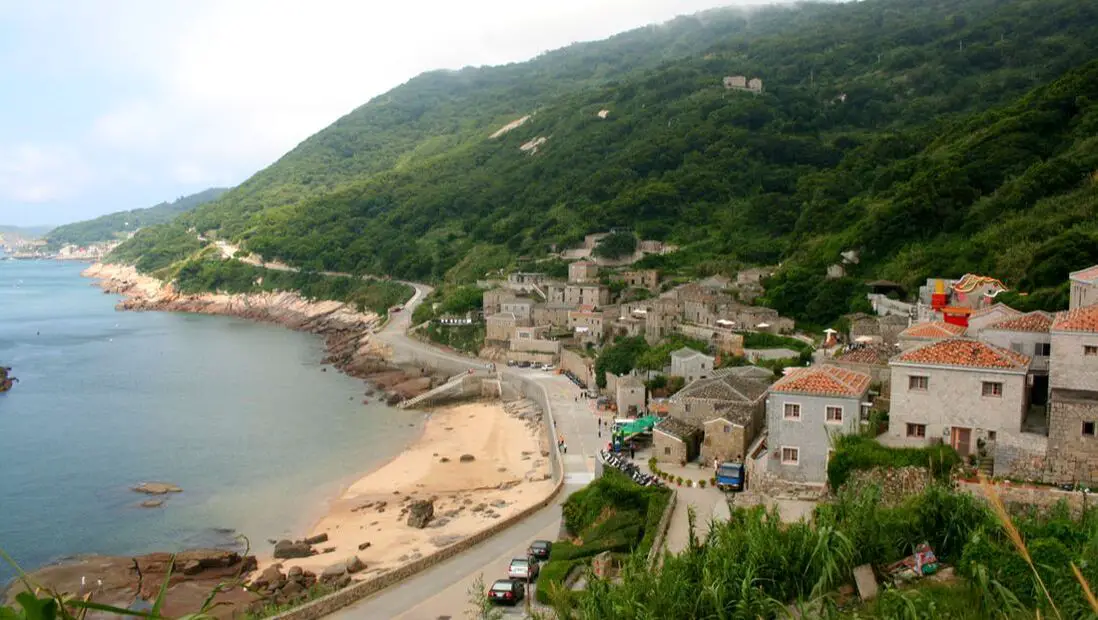
Beigan Island is one of the two largest Islands in Matsu (officially Lienchiang County, Taiwan), and has some of the best preserved traditional stone made fishing villages on the islands. There are also many historical military sites, as the islands were part of the front line during the Chinese Civil War. It is easily accessible via airplane or boat from Taipei.
Background: Thousands of years ago, stone aged peoples once inhabited the Matsu Islands, including Beigan Island itself. These stone aged people later disappeared. The Matsu islands were inhabited again around the Song Dynasty (990 - 1200 AD) by Chinese Fisherman, the descendants of whom still inhabit the islands today. During the Chinese Civil War, Matsu was used as a military outpost for the retreating ROC. During the years that followed, it withheld shelling and threats of invasion from China, helping to keep Taiwan free of communist control. In 1992 after cross straight relations had warmed up, martial law was lifted on the islands and tourists were allowed to visit. In 1994 Beigan Airport was opened, and was the only airport in Matsu for 9 years. In2003, the Nangan Airport was opened, which significantly lowered the number of travelers to Beigan. However fast and convenient boat travel has made it so that most tourists travel to both islands. Beigan Island is the second largest island in Matsu (behind Nangan), and a population of about 2,500. When to go: We recommend going between April and June when the "blue tear" phosphorescent microbes in the water will be the most visible at night. Also, winters can be cold and windy and summers very hot, and there could also be typhoons in the summer and fall. Tours and Activities: Beihai Tunnel Rocking Boat: about 150 NT Blue Tears Museum: about 300 NT SUP/Paddle experience: about 2300 NT You can search for other tours and activities on KKday here or Klook here. Just to let you know, if you book using the links above, we get some commission at no cost to you, and you can help support our blog. You can click here to receive $5 USD on your first Klook purchase. Hotels: We have stayed at and recommend Fu Hwa Homestay on Nangan (you can book on Agoda here, Booking,com here, or Trip.com here), and B&B of Blueshine on Beigan (you can book on Agoda here, Booking,com here, or Trip.com here). Both places were excellent, and provided us a car ride to and from the airport for free. You can also check out our Taiwan hotels guide here. Looking for a hotel? We recommend booking through Agoda here, which provides the best quality selection of accommodation on the island. You can also book Wifi and SIM cards for Taiwan on Gigago here. Need travel insurance? Compare prices on Insubuy here. How to get there: By Boat: There are boats from Nangan Fu'Ao Harbor (南竿福奧港) to Beigan Baisha Harbor (北竿白沙港) every hour from 7 AM to 5 PM. There are no daily routes to Beigan from other islands (except Daqiu). You can book tickets between Nangan and Beigan Islands on KKday here. By Plane: There are flights to and from Taipei Songshan Airport three times a day via Uni Air. You can book flights on KKday here, Trip.com here, CheapO Air here, or Kiwi here. Price: By Boat: 160 NT per person (one way from Nangan), or 500-2000 NT per person (one way from Taipei or Keelung). You can book ferry tickets to Matsu from Taipei or Keelung on KKday here. By Plane: About 2000 NT (one way from Taipei). There are flights to and from Taipei Songshan Airport three times a day via Uni Air. You can book flights on KKday here, Trip.com here, CheapO Air here, or Kiwi here. How to get around on the island: Beigan is a large, hilly island and it would be very hard to get around on foot or bicycle. We recommend one of the following By Ferries: The only way to get to smaller islands without airports is by ferry. You can check KKday here for ferry tickets or buy them at the harbor. By Scooter: We recommend riding a scooter as your #1 choice. It's fast, convenient, and there isn't much traffic on the island. A scooter will cost about 500 NT per day to rent. You can rent a scooter on Klook here or KKday here. When braking on hills, use both brakes, otherwise, you could lose traction on one tire and skid. Don't stop or park on a slope. Also, some hills that are too steep are closed off for scooters. You can also check out our scooter rental guide here. By Car/Taxi: You can rent a car or hire a taxi for 200O NT per day. If you are looking for car rentals, you can also search Qeeq here, Klook here, or KKday here. You can also check out our car rental guide here. By Bus: There are buses that go around the islands, but wait times can be 30 minutes or more. By Bicycle: Cycling is the best way to enjoy Taiwan's landscapes if you have the time and energy. Looking for bicycle rentals in Taiwan? You can search on KKday here and search for tours on Klook here. You can also check out our Taiwan cycling guide here. Map: Please see below:
Nanliao Harbor (aka Hsinchu Fishing Harbor) along Taiwan's west coast in Hsnichu City includes includes a seafood market and a wide grassy area (International Kite Park 國際風箏場). There is also a long sandy intertidal area nearby. It is a popular location for its seafood, kite flying, and ocean scenery.
Background: The Hsinchu Fishing Harbor at Nanliao dates back to 1731 when the Qing Dynasty first built a harbor in Hsinchu at the head of the Touqian River to aid with international trade. Over the centuries, the harbor went through various changes which included silting in many times, until its current form which was completed in 1991, to combat silting that occurred before the 1980's. Currently the main purpose of the harbor is to dock fishing vessels. During Dragon Boat Festival, dragon boat races are also held here. Kite flying is also a popular activity at the park. There is an international kite flying competition every September at the grassy park next to the harbor. On weekends you can also find many people relaxing here. In August 2020, a three year old was caught in a kite and flow 30 feet into the air. Luckily no one was injured by the kite activities were suspended for the rest of the day and it became viral news. Hours: 24/7 Price: Free Tours: You can find more tours and activities in Hsinchu such as You can find more tours and activities in Hsinchu such as river tracing, wild hot springs, white water kayaking, backpack rafting, Little Ding Dong Theme Park, Leofoo Village Theme Park, Window on China Theme Park, glamping, camping, stone spa, horse riding, Yukids Island, Tom and Bei Bei Parent Child Paradise, bee keeping experience, cycling, dried persimmons experience, Jump Wave Trampoline Park and more on Klook here or KKday here. Where to stay: Most of the accommodation you will find is near the city center. If you will only visit downtown, you can consider a day trip from Taipei. We have stayed at and recommend the Golden Motel a high quality motel near Green Grass Lake (you can book on Agoda here, Booking.com here, Hotels.com here, Expedia here, or Trip.com here), and CD Motel, another high quality motel in downtown Hsinchu (you can book on Agoda here, Booking.com here, or Trip.com here). Unfortunately I cannot recommend any further hotels that I have stayed at in Hsinchu because usually we stay at my wife's uncle's house. You can find out where to stay in our Taiwan hotels guide or search for the best hotel deals in Taiwan here. You can also book Wifi and SIM cards for Taiwan on Gigago here. Need travel insurance? Compare prices on Insubuy here. Just to let you know, if you book using the links above, we get some commission at no cost to you, and you can help support our blog. You can click here to receive $5 USD on your first Klook purchase. How to get there: By Car: From Taipei, take National Freeway 1 from Taipei and once in Hsinchu head west on expressway 68. The harbor is at the end of the road. Parking can be hard to find on weekends. If you are looking for car rentals in Hsinchu, you can also search Qeeq here, Klook here, or KKDay here. You can also check out our car rental guide here. By Scooter: From Hsinchu, drive along expressway 68 until you reach the harbor. Looking for scooter rental in Hsinchu? You can search Klook here or KKday here to look for options. You can also check out our scooter rental guide here. By Train/Bus: Take the TRA to Hsinchu Station, then switch to BL15 shuttle bus and take it to Nanliao Station. You can book tickets to travel to Hsinchu via inter-city bus on Klook here. You can book tickets to Hsinchu via high speed rail (HSR) on Klook here or KKDay here. Book tickets via the normal train (TRA) on Klook here. By Bicycle: Cycling is the best way to enjoy Taiwan's landscapes if you have the time and energy. Looking for bicycle rentals in Taiwan? You can search on KKday here and Klook here. You can also check out our Taiwan cycling guide here. Map: Please see below:
Wai'ao Beach (aka Gangao Beach 港澳沙灘, or Wai'ao Ocean Recreation Area 外澳海水浴場) in Toucheng township of Yilan County is one of the most popular surfing destinations in Taiwan. It features a long flat sandy beach and constant waves. It is also a special beach in Taiwan because you have a constant view of another island in the distance, Turtle Island. It is definitely a great beach worth visiting.
Background: The name Wai'ao Beach comes from "Wai (meaning outside)" of the "Ao (meaning harbor)," because the beach is just past Wushi Harbor. The beach has constant waves and many surf shops and showers nearby. The beach is usually kept pretty clean and there are umbrellas that you can rent. The sand is a darker color which means it can get hot in the sun. Due to the convenient transportation to the beach, it has become one of the most popular beach destinations in northern Taiwan. Hours: 24/7 Price: Free: You can book surfing lessons in Yilan on Klook here. Tours and Activities: You can purchase tours and tickets for many activities in Yilan such as Su'ao Crayon Castle, Taipingshan, Turtle Island, Lanyang Museum, Toucheng Leisure Farm, Zhang Mei Ama Capybura Farm, Bambi Land, Yinong Ranch, National Center for Traditional Arts, Taxi Museum, Glamping, Camping, ATV / 4-wheeling experience, SUP / paddle boarding, Ximeng Forest Theater, Surfing, Kayaking, Horse Riding, River Tracing, River Rafting, River Tubing, Pack Rafting, Water Biking, Snorkeling, Canoeing, Shrimping and many others through Klook here or KKday here. Accommodation: Looking for a hotel? We recommend booking through Agoda here, which provides the best quality selection of accommodation on the islands. We have stayed at and recommend Ying Shih Guest House, a resort in Datong Township near Taipingshan and Fan Fan Hot Spring (you can book on Agoda here or Booking.com here), and Jiaosi Hotspring Hotel, a hotel with hot springs in each room (you can book on Agoda here, Booking.com here, Hotels.com here, Expedia here, or Trip.com here). We have also stayed at Toucheng Leisure Farm, a recreational farm and experience center in Toucheng (you can book on Agoda here, Booking.com here, Hotels.com here, Expedia here, on Klook here, or on Trip.com here). You can also book Wifi and SIM cards for Taiwan on Gigago here. Need travel insurance? Compare prices on Insubuy here. Just to let you know, if you book using the links above, we get some commission at no cost to you, and you can help support our blog. You can click here to receive $5 USD on your first Klook purchase. How to get there: By Car: Take national highway 5 east to Yilan and then turn north to Toucheng. There is free parking near the community development center (頭城鎮港口社區發展協會), and the beach is just a short walk from there. You can search Klook here or KKday here to look for options. You can also check out our scooter rental guide here. If you are looking for car rentals in Yilan, you can also search Klook here or KKDay here. You can also check out our car rental guide here. By Train: Take the TRA to Wai'ao train station. It's about an hour ride from Taipei. From Wai'ao station, the beach is literally just a few steps away. You can book tickets to travel to Yilan via inter-city bus on Klook here. You can book tickets to Yialn via high speed rail (HSR) on Klook here or KKDay here. Book tickets via the normal train (TRA) on Klook here. Bicycle rental: Cycling is the best way to enjoy Taiwan's landscapes if you have the time and energy. Looking for bicycle rentals in Taiwan? You can search on KKday here and search for tours on Klook here. You can also check out our Taiwan cycling guide here. Map: See below:
The Caoling Old Trail (aka Caoling Historic Trail) is a section of the Danlan Old Trail connecting Gongliao District of New Taipei to Dali District of Toucheng Township in Yilan. In the past it was an important shipping route for goods from Yilan to Tamsui. Now it is a popular and family friendly hiking route due to its convenient public transportation, slow elevation gain, grassy mountain hills, and great views of the surrounding area.
Background: The name Caoling comes from the mang grass (silver Miscanthus flowers 芒草) that grows on the top of the ridge on the east border of Yilan and New Taipei where there are almost no trees. The trail is said to first be made by the Plains Aboriginies to connect their tribes in the mountains of New Taipei. During the Qing Dynasty, the Caoling Old trail was an important part of the Danlan Old Trail (淡蘭古道 which means the road between Tamsui and Yilan), which was split into three paths, and the Caoling Old Trail was on the Northern Path. The Northern Path was the first path created between Yilan and Tamsui, and winded from Mengjia Old Street to Nuannuan, then to Ruifang, and onto Jiufen and Houtong. From Houtong, the road then went to Mudan and then Shuangxi, then went over the Caoling pass to Yilan. During this time, most of the things traded were tea leaves and agricultural goods. Also, it was the main route for Han Chinese immigrants to come to Yilan. In 1867 Liu Mingdeng, the commander general of Taiwan at the time, walked along the Caoling Old Trail and ran into thick fog and evil spirits. Therefore he made two stone tablets: the "tiger" tablet and the Xiongzhenbianyan Tablet to ward off evil sprits and bring good luck. Before the old Caoling Railway tunnel was completed, the last train along the Yilan Railway line stopped at Fulong, and people then walked along the Caoling Old Trail to Yilan. This is part of the reason why the trail is still preserved today. However after the tunnel was completed, people were able to travel to Yilan by train and the trail lost its importance. Later on, provincial highway 2. Now the trail see a fair amount of tourists, especially during mang grass season (from September to November). Hours: 24/7 Price: Free Difficulty: Easy but long. Length: 9.5 KM Elevation Gain: 500 meters Time Needed: Roughly 4-6 hour round trip When to go: If you don't mind the crowds, the best time to go is in Autumn during the Mang Grass season from September to November. Spring will also have nice temperatures but fewer people and no Mang Grass. Other than that, in the summer it can get really hot because there is little shade on the grassy mountain top, and in the winter it can get really cold and windy. Tours and Activities: You can purchase tours and tickets for many activities in Yilan such as Su'ao Crayon Castle, Taipingshan, Turtle Island, Lanyang Museum, Toucheng Leisure Farm, Zhang Mei Ama Capybura Farm, Bambi Land, Yinong Ranch, National Center for Traditional Arts, Taxi Museum, Glamping, Camping, ATV / 4-wheeling experience, SUP / paddle boarding, Ximeng Forest Theater, Surfing, Kayaking, Horse Riding, River Tracing, River Rafting, River Tubing, Pack Rafting, Water Biking, Snorkeling, Canoeing, Shrimping and many others through Klook here or KKday here. Accommodation: Looking for a hotel? We recommend booking through Agoda here, which provides the best quality selection of accommodation on the islands. We have stayed at and recommend Fullon Hotel, which has a location right on the beach in Fulong (you can book on Agoda here, Booking.com here, or Klook here). We have also stayed at Toucheng Leisure Farm, a recreational farm and experience center in Toucheng (you can book on Agoda here, Booking.com here, Hotels.com here, Expedia here, on Klook here, or on Trip.com here). You can also book Wifi and SIM cards for Taiwan on Gigago here. Need travel insurance? Compare prices on Insubuy here. Just to let you know, if you book using the links above, we get some commission at no cost to you, and you can help support our blog. You can click here to receive $5 USD on your first Klook purchase. How to get there: By Train: Take the TRA to Fulong Station (or Dali Station), the old trail starts from each station. You can book tickets to travel to Yilan via inter-city bus on Klook here. You can book tickets to Yialn via high speed rail (HSR) on Klook here or KKDay here. Book tickets via the normal train (TRA) on Klook here. Bicycle rental: Cycling is the best way to enjoy Taiwan's landscapes if you have the time and energy. Looking for bicycle rentals in Taiwan? You can search on KKday here and search for tours on Klook here. You can also check out our Taiwan cycling guide here. By Car/Scooter: From Taipei, on provincial highway 5 until you reach Keelung, then take provincial highway 2B to Gongliao. If you want to shorten the hike, you can park at Yuanwangkeng Park (遠望坑親水公園), but you will have to turn around once you reach the top. If you start from either of the train stations, you can walk the full 9.5 KM loop and get back to where you started by train. Looking for scooter rental in Yilan? You can search Klook here or KKday here to look for options. You can also check out our scooter rental guide here. If you are looking for car rentals in Yilan, you can also search Klook here or KKDay here. You can also check out our car rental guide here. Map: Please see below (the trail is the path on the left):
The Fulong-Coaling-Sandiao Cape- bike route is one of the most biker friendly routes in Taiwan, the roughly 2 hour loop is something that the whole family can enjoy. It includes a 2KM ride through the Old Coaling Railroad Tunnel, as well as a ride along the Sandiao Cape coast on an enclosed bike path, where one can enjoy great views of the ocean, Turtle Island, wavy geological features on the coastline, and historical stone villages along the way. This bike route is highly recommended for people of all ages.
Background: The area around Fulong was originally inhabited by the Basay indigenous tribe who has a village and hunting grounds there. In 1626, the Spanish landed near Fulong and renamed the location Santiago (transliterated from Taiwanese as Sandiao 三貂, as in Sandiao Cape). After the Qing colonized Taiwan, many Fujianese fisherman relocated to the area and began to build the iconic stone houses you can see today. The Old Caoling Tunnel was built in 1924 during the Japanese occupation of Taiwan, and is 2,167 meters long. At the time it was built, it was the longest tunnel in Taiwan. The tunnel took 3 years to build due to delays from Malaria, remoteness of the location, and digging accidents killing 11 people and injuring over 300. The tunnel was only one lane wide, too narrow for electric trains, and so was decommissioned in 1985 and lay waste for 22 years. The tunnel was reopened when the Coaling Bicycle Loop was created in 2007, using the old Caoling Tunnel as its main looping point. Also, along the northeast coast are some old fishing villages that have been around since the Qing Dynasty, including traditional stone houses. One of these historical villages called Magang (馬崗) is in threat of destruction to make way for a resort. however as Li Yongping out it "The thing that attracts modern travelers most is not 5 star hotels, but history and culture!" Save the Magang Stone Houses! Besides these historical sites, there is amazing scenery along the bike ride, such as views of Turtle Island and long flat sections of layered rock (see below to know what I am talking about). Price: Bicycle Rental: 100-500 NT depending on the bike Electric Bicycle Rental: 300-400 NT You can search for bike rentals on KKday here and search for tours on Klook here. You can also check out our Taiwan cycling guide here. Riding Time: The whole bike route is about 20 KM and takes 1-2 hours to complete. We were going really slow with many pit stops and it took us 2 hours. Hours: The Old Caoling Tunnel is open from 8:30 AM - 5:00 PM. It is okay to walk through the tunnel on weekdays, but on weekends only bike traffic is allowed for safety reasons. When to go: May to October when the weather is nice and the water is warm. Winter on the northeast coast is cold and windy. Tours and Activities: You can purchase tours and tickets for many activities in Yilan such as Su'ao Crayon Castle, Taipingshan, Turtle Island, Lanyang Museum, Toucheng Leisure Farm, Zhang Mei Ama Capybura Farm, Bambi Land, Yinong Ranch, National Center for Traditional Arts, Taxi Museum, Glamping, Camping, ATV / 4-wheeling experience, SUP / paddle boarding, Ximeng Forest Theater, Surfing, Kayaking, Horse Riding, River Tracing, River Rafting, River Tubing, Pack Rafting, Water Biking, Snorkeling, Canoeing, Shrimping and many others through Klook here or KKday here. Accommodation: Looking for a hotel? We recommend booking through Agoda here, which provides the best quality selection of accommodation on the islands. We have stayed at and recommend Fullon Hotel, which has a location right on the beach in Fulong (you can book on Agoda here, Booking.com here, or Klook here). We have also stayed at Toucheng Leisure Farm, a recreational farm and experience center in Toucheng (you can book on Agoda here, Booking.com here, Hotels.com here, Expedia here, on Klook here, or on Trip.com here). You can also book Wifi and SIM cards for Taiwan on Gigago here. Need travel insurance? Compare prices on Insubuy here. Just to let you know, if you book using the links above, we get some commission at no cost to you, and you can help support our blog. You can click here to receive $5 USD on your first Klook purchase. How to get there: By Train: Take the TRA train to Fulong Station. Walk straight from the station and you will see tons of bike rental shops. You can book tickets to travel to Yilan via inter-city bus on Klook here. You can book tickets to Yialn via high speed rail (HSR) on Klook here or KKDay here. Book tickets via the normal train (TRA) on Klook here. Bicycle rental: Cycling is the best way to enjoy Taiwan's landscapes if you have the time and energy. Looking for bicycle rentals in Taiwan? You can search on KKday here and search for tours on Klook here. You can also check out our Taiwan cycling guide here. By Car/Scooter: Take provincial highway 2 from Qidu in Keelung through the mountains past Shifen and Shuangxi until you reach Gongliao on the coast. The beach is right in front of the train station, and there is free parking in front of Dongxing Temple. From there you can walk to the train station where there are bike rentals everywhere. Looking for scooter rental in Yilan? You can search Klook here or KKday here to look for options. You can also check out our scooter rental guide here. If you are looking for car rentals in Yilan, you can also search Klook here or KKDay here. You can also check out our car rental guide here. Map: Please see below:
This glass building in Budai is the highest high-heeled structure in the world. It is not actually a real church, it is a classic tourist trap that is slowly fading in popularity. There is not much here except this and some seafood restaurants, but it was still fun to visit.
Background: Budai is a fishing port village in Chiayi county and has the only ferry to Penghu from the main island of Taiwan. Construction of the high-heel church was completed in 2016. It is composed of 300 pieces of blue glass and is 17.76 meters tall, 12 meters wide, and 25 meters long. Many people were afraid that the building would be abandoned by tourists after completion because it is lacking in historical or cultural significance. It is said the chapel was built to honor the women that suffered a breakout of blackfoot disease which broke out in the area decades ago, which prevented them from wearing high heels and having a happy wedding. After construction, it received the Guinness World Record for the highest high-heeled shaped structure in the world. Even though the high-heeled building is used as a wedding venue, it is not a real church and is not related to any religion. Hours: 24/7 Price: Free Tours and Activities: You can purchase tours and tickets for many activities in Chiayi such as glamping, Three Pigs Farm, Janfusun Fancy World, Taiping Suspension Bridge, Chateau de Jourdeness , Kumquat Tourist Factory, Taisugar Siantou Cultural Park, Meteor Garden, Veoveoana Tribe Tour, Danayi Valley, Batongguan Historic Trail, Xianghe Leisure Farm, Foot massage and many others through Klook here or KKday here. Accommodation: We have stayed at and recommend Chiayi Crown Hotel (you can book on Agoda here, Booking.com here, Hotels.com here, or Expedia here), Shin Kao Hotel (you can book on Agoda here or Trip.com here), and YesHotel (you can book on Agoda here, Booking.com here, Hotels.com here, or Expedia here), which are all quality hotels for a reasonable price near Chiayi Station. We also recommend Shianghu Botique Hotel (you can book on Agoda here, Booking.com here, Hotels.com here, or Expedia here), with excellent quality for the money just our of Chiayi City center. Finally we have stayed at and recommend Fenchihu Street Hotel (you can book on Agoda here, Booking.com here, Hotels.com here, or Expedia here), which is within walking distance of Fenqihu Old Street, Fenqihu Station, and many amazing hikes in the area. Find out more about where to stay in our Taiwan hotels guide or search for the best hotel deals in Taiwan here. We recommend booking through Agoda here, which provides the best quality selection of accommodation on the islands. You can also book Wifi and SIM cards for Taiwan on Gigago here. Need travel insurance? Compare prices on Insubuy here. Just to let you know, if you book using the links above, we get some commission at no cost to you, and you can help support our blog. You can click here to receive $5 USD on your first Klook purchase. How to get there: By car/scooter: Take provincial highway 17 or Expressway 61 to Budai along the coast in Chiayi, then head west to the coast. The high heeled church is near the ocean in Budai and is hard to miss. Looking for scooter rental in Chiayi? You can check out Klook here or KKday here to search for options. You can also check out our scooter rental guide here. If you are looking for car rentals, you can also search Qeeq here, Klook here, or KKday here. You can also check out our car rental guide here. By bus: You can take bus 7209H from Chiayi HSR station, which takes about an hour and a half to reach Budai. You can book tickets to travel to Chiayi via inter-city bus on Klook here. You can book tickets to Chiayi via high speed rail (HSR) on Klook here or KKDay here. Book tickets via the normal train (TRA) on Klook here. By bicycle: Looking for bicycle rentals in Taiwan? You can search on KKday here and search for tours on Klook here. Map: Please see below:
The Xingda Seafood Market (aka Xingda Tourist Fish Market, Hsinta Harbor Fish Market or Qieding Fish Market) is a large seafood market in Qieding District of Kaohsiung. You can find just about any kind of fresh seafood here, including sashimi, whole fish, shellfish, squid, etc., along with other traditional Taiwanese snacks. Also, the market is known for high quality knives. It is definitely worth a trip if you are in the area.
Background: Xingda Seafood is often called Qieding Fish Market because it is located in Qieding District of Kaohsiung, which is not very large and only covers a small area near the harbor. This area has been a delta for rivers and since the Qing Dynasty has served as the border between Tainan and Kaohsiung, which has changed with the Erren River. Xingda Harbor was built in 1997 and consists of four parts: a yacht tourism and business area, ocean business development zone, Fuli harbor living zone, and themed relaxation zone. There is also a fish market here. In the future, there are plans to expand capacity for the harbor. Hours: 11 AM to 6 PM (opens one hour earlier and closes one hour later on weekends) Price: Free How to get there: By car/scooter: Take provincial highway 17 north from Kaohsiung or South from Tainan and stop at Xingda Harbor. There is free parking on the side of the road. Looking for scooter rental in Kaohsiung? You can check out Klook here or KKday here to search for options. You can check also out our scooter rental guide here. If you are looking for car rentals, you can search Qeeq here, KKday here, or Klook here. You can also check out our car rental guide here. By bus: From Tainan Train Station, you can take Tainan bus 1 south to Xingda Harbor Station. The whole trip will take about an hour and a half. You can book tickets to travel to Kaohsiung via inter-city bus on Klook here. You can book tickets to Kaohsiung via high speed rail (HSR) on Klook here or KKDay here. Book tickets via the normal train (TRA) on Klook here. You can also book a Kaohsiung Travel pass here. Map: Please see below:
Dulan is a quiet coastal town just 20 km north of Taitung City. It has become a major surfing destination as well, especially for foreigners. Some would even say that it is the coolest beach hangout in Taiwan! There is no public transportation to Dulan other than by bus, so do not expect large crowds. It is for sure one of Taiwan's most beautiful and uncrowded seas side destinations.
Background: Dulan is a village of the Amis Aboriginie Tribe (阿美族) which have lived there since at least 1500 BC, and most of the people that live there now are Taiwan Aborigines. The area is still a center for Amis rituals and traditional ceremonies, as well as aboriginal culture. How to get there: By Car/Scooter: We recommend taking highway 11 from Taitung north 30km to the town. Feel free to stop and enjoy the scenery along the way. Looking for scooter rental in Taitung? You can search Klook here or KKday here to search for options. You can also check out our scooter rental guide here. If you are looking for car rentals, you can also search KKday here or Klook here. You can check out our car rental guide here. By Bus: You can take bus 8102 or 8103 from Taitung, but according to Google this will take about 3 hours. You can book tickets to travel to Taitung via inter-city bus on Klook here. Book tickets via the normal train (TRA) on Klook here. Accommodation: Booking accommodation in the Taitung can be difficult in the summer months and on weekends when rooms can be fully booked for months in advance. We suggest a better quality selection on Agoda.com. We have stayed at and recommend the Papago International Resort in Chishang (you can book on Agoda here, Booking.com here, Hotels.com here, or Expedia here), which is a five star hotel with private villas with pools for each room, and Mountain and Ocean B & B in Taimali (you can book on Agoda here, Booking.com here, Hotels.com here, or Expedia here), which is a quiet and affordable B&B right next to the beach. You can also book Wifi and SIM cards for Taiwan on Gigago here. Need travel insurance? Compare prices on Insubuy here. Tours: There are many tours and activities such as snorkeling, diving, SUPing, Surfing, Speed Boating, Glamping, River tracing and more in Taitung. You can find more tours of Taitung on Klook here or KKday here. Just to let you know, if you book using the links above, we get some commission at no cost to you, and you can help support our blog. You can click here to receive $5 USD on your first Klook purchase. Map: Please see the map below:
Baishawan Beach in Kenting (aka White Sand Bay, not to be confused with Baishawan Beach in New Taipei) is arguably the best beach in Taiwan, with excellent sand, warm clear water, warm temperatures year-round, and fewer visitors than Nanwan Beach.
Background: Kenting was first settled by Chinese farmers during the Qing Dynasty. The word Kenting comes from two words that mean cultivate (ken3 墾) and strong man (丁 ding1). During that time, a group of strong men (or Zhuang Ding 壯丁) came from Guangdong, who were basically Chinese pioneers of the area to cultivate the land, hence the area was named Kenting for them. The area was considered to be made into a park during the Japanese occupation due to it being the only tropical location in the Japanese Empire but was never officially created. Kenting National Park was established in 1984 as the first national park in Taiwan after WWII. Kenting became a major vacation spot, becoming a center for hostels and hotels for travelers. Kenting is considered by many to have the best beaches in Taiwan. This is because of its fine white sand and year-round warm temperatures and sunshine (it is in the tropical part of Taiwan after all). Baishawan Beach was a filming location for Life of Pi, acting as the tropical Mexican shoreline. Baishawan Beach was also named the "Best Kept Secret" beach in the world by BeachTomato.com. Hours: 24/7 Price: Free When to go: Summer! It's when the water is warmest and the sun is hottest. However there will be more people in summer, and there could be Typhoons. Spring and Fall are also good times to go, as there will be fewer visitors and cooler temperatures. Winter is an okay time to go as well, it will be warmer than the rest of Taiwan and the water will still be warm enough to swim in. How to get there: By Car/Scooter: Take provincial highway 1 south to the bottom of Taiwan until it becomes provincial highway 26. After you pass Hengchun, take a right onto Longguang Road and keep going west toward the sea. The beach will be on your right as you travel south on county road 153. Looking for scooter rental in Kenting? Click here or here to search for options. You can also check out our Taiwan scooter rental guide here. If you are looking for car rentals, you can also search here. You can also check out our car rental guide here. By Bus: Busses leave daily to Kenting from Zuoying HSR station, Kaohsiung Station, and Pingtung. Get off at the Hengchun Bus Station, and then take the 305 Hengchun Bus to the White Sand Bay stop. You can book tickets to Pingtung via high speed rail (HSR) on Klook here or KKDay here, or book tickets via the normal train (TRA) on Klook here. You can book tickets to travel to Pingtung via inter-city bus on Klook here. By Plane: There are direct shuttle buses to Kenting from Kaohsing's Xiaogang (KHH) Airport. You can book cheap flights to Kinmen on Trip.com or CheapO Air. You can also search for cheap flights in Taiwan on Kiwi here. Accommodation: I have stayed at many hostels and hotels in Kenting, and even almost bought a house here. Some places that I have stayed at and can recommend are Nanwan Kiki (book on Agoda here, Booking.com here), a B&B next to Nanwan Bay, Kenting's most popular Beach. There are also a few decent hotels near Kenting Street Night Market like Kenting Star Inn 888 (book on Agoda here, Klook here, Hotels.com here, Expedia here, or Booking.com here), or Kenting Dajianshan Hotel (book on Agoda here, Booking.com here, Hotels.com here, or Expedia here). You will notice that none of these hotels are five star resorts (I do not come to Kenting to waste my time at a resort, but you can still search Agoda, Booking.com, Hotels.com, or Expedia for those) but they are in my opinion the above have the best value for the money. Looking for a hotel? Find out where to stay in our Taiwan hotels guide or search for the best hotel deals in Taiwan here. We recommend booking through Agoda here, which provides the best quality selection of accommodation in Taiwan. You can also book Wifi and SIM cards for Taiwan on Gigago here. Need travel insurance? Compare prices on Insubuy here. Tours and Activities in Kenting: There are many activities available such as snorkeling, diving, SUPing, surfing, submarine riding, and river tracing. You can find more tours of Kenting on Klook here or KKday here. Just to let you know, if you book using the links above, we get some commission at no cost to you, and you can help support our blog. You can click here to receive $5 USD on your first Klook purchase. Map: Please see below:
Guosheng Lighthouse is the most western point of the main island of Taiwan. It looks like an electricity transmission tower and is surrounded by sand dunes. It’s deep in rural Tainan's Taijiang National Park, but it’s worth the trip.
Background: Guosheng Lighthouse was built on the Dingtoue Sand Dune (頂頭額沙洲), which is the westernmost point on the island of Taiwan. During the Qing Dynasty, this area was once home to one of the largest salt drying fields in Taiwan, as well as home to fisherman. It is said this spot is the first place that Koxinga landed in Taiwan, however this is not clear to be true or not. During the Japanese era, a lighthouse was built on this spot, called Zengwen Lighthouse 曾文燈塔, which was later totally destroyed during allied bombing raids in WWII. Later, the ROC government built a wooden lighthouse on the Dingtoue Sand Dune in 1957 that was 20 meters tall, but it was often hit by waves and nearly fell into the ocean, and was finally destroyed completely by Typhoon Viola in 1969. A new lighthouse, the one that stands today, was built from concrete and steel in 1969, and stands 32 meters high. It needs constant maintenance such as paint to stop corrosion to its frame. In September 2022, the tower was closed for maintenance and renovations, and is expected to open again by the end of 2022. Price: Free Hours: 24/7 How to get there: By car/scooter: From provincial highway 17 in Qigu District of Tainan, turn west on highway 173 toward the ocean. Just keep going and don't stop until you reach the lighthouse at the end of the road. Looking for scooter rental in Tainan? You can search KKday here or Klook here to look for options. You can also check out our scooter rental guide here. If you are looking for car rentals in Tainan, you can also search Klook here or KKDay here. You can also check out our car rental guide here. By bus: There ain't no public transportation to this location. You can book tickets to travel to Tainan via inter-city bus on Klook here. You can book tickets to Tainan via high speed rail (HSR) on Klook here or KKDay here. Book tickets via the normal train (TRA) on Klook here. Where to stay? Most of the accommodation you will find is near the city center. If you only want to visit old Tainan, you can book a hotel near the west part of downtown and consider walking or cycling around the city. We have stayed at and recommend Liho Hotel, a quality hotel right next to Chikan Tower, and Famouse Hotel, which is another great hotel also within walking distance of Chikan Tower in old Tainan. You can find out where to stay in our Taiwan hotels guide or search for the best hotel deals in Taiwan here. Need travel insurance? Compare prices on Insubuy here. You can also book Wifi and SIM cards for Taiwan on Gigago here. Tours: You can find more tours and activities in Tainan such as SUPing / Paddle Boarding, Oyster Harvesting , Wind Surfing, Glamping and more on Klook here or KKday here. Map: Please see below:
Maobitou Park is a coral and limestone cliff area with viewing platform that offers amazing panoramic views of the Hengchun Peninsula. There are also many interesting rock formations such as a rock that looks like a cat, as well as plants and wildlife. You should definitely stop by on your next trip to Kenting.
Background: Maobitou is the dividing line between the Taiwan Strait and the Bashi Channel in the Pacific Ocean. There is one prominent rock here that looked like a cat to local residents, hence the name of the area Maobitou 貓鼻頭, literally meaning cat rock. After uplift of the Eurasian Plate due to Collision with the Pacific plate, the rocks here have been thrust up from the sea over thousands of years. Now that they are exposed to wind and rain, the rocks here have taken on odd shapes and made giant holes and crevices. The water between Maobitou and Houshanbi Harbor is clear and full of sea life, and is one of the most diverse environments in Taiwan. Kenting was first settled by Chinese during the Qing Dynasty. The word Kenting comes from two words that mean cultivate (ken3 墾) and strong man (丁 ding1). During that time, a group of strong men (or Zhuang Ding 壯丁) came from Guangdong, who were basically Chinese pioneers of the area to cultivate the land, hence the area was named Kenting for them. The area was considered to be made into a park during the Japanese occupation due to it being the only tropical location in the Japanese Empire, but was never officially created. Kenting National Park was established in 1984 as the first national park in Taiwan after WWII. Kenting became a major vacation spot, becoming a center for hostels and hotels for travelers. Kenting is considered by many to have the best beaches in Taiwan. This is because of its fine white sand and year-round warm temperatures and sunshine (it is in the tropical part of Taiwan after all). Hours: 8 AM to 5 PM Price: 30 NT per person Parking: 40 NT for cars or 10 NT for scooters. When to go: Summer! It's when the water is warmest and the sun is hottest. However there will be more people in summer, and there could be Typhoons. Spring and Fall are also good times to go, as there will be less visitors and cooler temperatures. Winter is an okay time to go as well, it will be warmer than the rest of Taiwan and the water will still be warm enough to swim in. How to get there: By Car/Scooter: Take provincial highway 1 south to the bottom of Taiwan until it becomes provincial highway 26. After that turn right on highway 153 and keep left until you see the signs to Maobutou. Looking for scooter rental in Kenting? Click here or here to search for options. You can also check out our Taiwan scooter rental guide here. If you are looking for car rentals, you can also search here. You can also check out our car rental guide here. By Bus: Busses leave daily to Kenting from Zuoying HSR station, Kaohsiung Station, and Pingtung. From Hengchun Bus Station, you can take shuttle bus 102 to Maobitou Bus Stop. You can book tickets to Pingtung via high speed rail (HSR) on Klook here or KKDay here, or book tickets via the normal train (TRA) on Klook here. You can book tickets to travel to Pingtung via inter-city bus on Klook here. Accommodation: I have stayed at many hostels and hotels in Kenting, and even almost bought a house here. Some places that I have stayed at and can recommend are Nanwan Kiki (book on Agoda here, Booking.com here), a B&B next to Nanwan Bay, Kenting's most popular Beach. There are also a few decent hotels near Kenting Street Night Market like Kenting Star Inn 888 (book on Agoda here, Klook here, Hotels.com here, Expedia here, or Booking.com here), or Kenting Dajianshan Hotel (book on Agoda here, Booking.com here, Hotels.com here, or Expedia here). You will notice that none of these hotels are five star resorts (I do not come to Kenting to waste my time at a resort, but you can still search Agoda, Booking.com, Hotels.com, or Expedia for those) but they are in my opinion the above have the best value for the money. Looking for a hotel? Find out where to stay in our Taiwan hotels guide or search for the best hotel deals in Taiwan here. We recommend booking through Agoda here, which provides the best quality selection of accommodation in Taiwan. You can also book Wifi and SIM cards for Taiwan on Gigago here. Need travel insurance? Compare prices on Insubuy here. Tours and Activities in Kenting: There are many activities available such as snorkeling, diving, SUPing, surfing, submarine riding, and river tracing. You can find more tours of Kenting on Klook here or KKday here. Just to let you know, if you book using the links above, we get some commission at no cost to you, and you can help support our blog. You can click here to receive $5 USD on your first Klook purchase. Map: Please see below:
Houbihu Beach (aka Zhongzhou Beach or Daguang Beach) is a long coral beach between Houbihu Harbor and the No. 3 Nuclear plant in Taiwan. It features shallow water and great snorkeling. Also due to its location and lack of facilities there are usually not many people here.
Background: Houbihu beach was originally closed to the public until recently. Now that it has opened up, it has become a popular location for snorkeling, surfing, and using SUPs. There are no bathrooms or showers at the beach. Kenting was first settled by Chinese during the Qing Dynasty. The word Kenting comes from two words that mean cultivate (ken3 墾) and strong man (丁 ding1). During that time, a group of strong men (or Zhuang Ding 壯丁) came from Guangdong, who were basically Chinese pioneers of the area to cultivate the land, hence the area was named Kenting for them. The area was considered to be made into a park during the Japanese occupation due to it being the only tropical location in the Japanese Empire, but was never officially created. Kenting National Park was established in 1984 as the first national park in Taiwan after WWII. Kenting became a major vacation spot, becoming a center for hostels and hotels for travelers. Kenting is considered by many to have the best beaches in Taiwan. This is because of its fine white sand and year-round warm temperatures and sunshine (it is in the tropical part of Taiwan after all). Hours: 24/7 Price: Free When to go: Summer! It's when the water is warmest and the sun is hottest. However there will be more people in summer, and there could be Typhoons. Spring and Fall are also good times to go, as there will be less visitors and cooler temperatures. Winter is an okay time to go as well, it will be warmer than the rest of Taiwan and the water will still be warm enough to swim in. How to get there: By Car/Scooter: Take provincial highway 1 south to the bottom of Taiwan until it becomes provincial highway 26. After you pass Hengchun, take a right onto Longguang Road and keep left toward Houbihu Harbor. The beach is to the north of the fishing harbor. There is free parking on the side of the road. Looking for scooter rental in Pingtung? Click here or here to search for options. You can also check out our Taiwan scooter rental guide here. If you are looking for car rentals, you can also search here. You can check out our car rental guide here. By Bus: Busses leave daily to Kenting from Zuoying HSR station, Kaohsiung Station, and Pingtung. Get off at the Hengchun Bus Station, and then take the 102 shuttle Bus to the Houbihu stop and walk about 15 minutes to the beach. You can book tickets to Pingtung via high speed rail (HSR) on Klook here or KKDay here, or book tickets via the normal train (TRA) on Klook here. You can book tickets to travel to Pingtung via inter-city bus on Klook here. By Plane: There are direct shuttle busses to Kenting from Kaohsiung's Xiaogang (KHH) Airport. Accommodation: I have stayed at many hostels and hotels in Kenting, and even almost bought a house here. Some places that I have stayed at and can recommend are Nanwan Kiki (book on Agoda here, Booking.com here), a B&B next to Nanwan Bay, Kenting's most popular Beach. There are also a few decent hotels near Kenting Street Night Market like Kenting Star Inn 888 (book on Agoda here, Klook here, Hotels.com here, Expedia here, or Booking.com here), or Kenting Dajianshan Hotel (book on Agoda here, Booking.com here, Hotels.com here, or Expedia here). You will notice that none of these hotels are five star resorts (I do not come to Kenting to waste my time at a resort, but you can still search Agoda, Booking.com, Hotels.com, or Expedia for those) but they are in my opinion the above have the best value for the money. Looking for a hotel? Find out where to stay in our Taiwan hotels guide or search for the best hotel deals in Taiwan here. We recommend booking through Agoda here, which provides the best quality selection of accommodation in Taiwan. You can also book Wifi and SIM cards for Taiwan on Gigago here. Need travel insurance? Compare prices on Insubuy here. Tours and Activities in Kenting: There are many activities available such as snorkeling, diving, SUPing, surfing, submarine riding, and river tracing. You can find more tours of Kenting on Klook here or KKday here. Just to let you know, if you book using the links above, we get some commission at no cost to you, and you can help support our blog. You can click here to receive $5 USD on your first Klook purchase. Map: Please see below:
Lovers Beach is a small secret beach behind the Youth Activity Center in Kenting. It is small but usually free of crowds, and has calm, clear water. If you have time, you should check out this secret beach paradise.
Background: Lovers beach is a very small coral beach. The sand here is mostly rocky, but the water is clear. There is also a place to wash your feet nearby. The Youth Activity Center is the largest of its kind in Taiwan, and offers accommodation in the form of traditional Min style houses. There is also a restaurant on the site. If you book a room here you do not have to pay the price of admission. The entrance to the park also features hiking trails to Frog Rock and the surrounding area. Kenting was first settled by Chinese during the Qing Dynasty. The word Kenting comes from two words that mean cultivate (ken3 墾) and strong man (丁 ding1). During that time, a group of strong men (or Zhuang Ding 壯丁) came from Guangdong, who were basically Chinese pioneers of the area to cultivate the land, hence the area was named Kenting for them. The area was considered to be made into a park during the Japanese occupation due to it being the only tropical location in the Japanese Empire, but was never officially created. Kenting National Park was established in 1984 as the first national park in Taiwan after WWII. Kenting became a major vacation spot, becoming a center for hostels and hotels for travelers. Kenting is considered by many to have the best beaches in Taiwan. This is because of its fine white sand and year-round warm temperatures and sunshine (it is in the tropical part of Taiwan after all). Hours: 6:30 AM - 5 PM Price: Entrance fee: 50 NT per person Parking: 50 NT per car When to go: Summer! It's when the water is warmest and the sun is hottest. However there will be more people in summer, and there could be Typhoons. Spring and Fall are also good times to go, as there will be less visitors and cooler temperatures. Winter is an okay time to go as well, it will be warmer than the rest of Taiwan and the water will still be warm enough to swim in. How to get there: By Car/Scooter: Take provincial highway 1 south to the bottom of Taiwan until it becomes provincial highway 26. After that keep going past Kenting Street. There is paid parking inside the youth activity center. Looking for scooter rental in Kenting? Click here or here to search for options. You can also check out our Taiwan scooter rental guide here. If you are looking for car rentals, you can also search here. You can check out our car rental guide here. By Bus: Busses leave daily to Kenting from Zuoying HSR station, Kaohsiung Station, and Pingtung. Get off at the Xiaowan Beach stop (小灣). You can book tickets to Pingtung via high speed rail (HSR) on Klook here or KKDay here, or book tickets via the normal train (TRA) on Klook here. You can book tickets to travel to Pingtung via inter-city bus on Klook here. Accommodation: I have stayed at many hostels and hotels in Kenting, and even almost bought a house here. Some places that I have stayed at and can recommend are Nanwan Kiki (book on Agoda here, Booking.com here), a B&B next to Nanwan Bay, Kenting's most popular Beach. There are also a few decent hotels near Kenting Street Night Market like Kenting Star Inn 888 (book on Agoda here, Klook here, Hotels.com here, Expedia here, or Booking.com here), or Kenting Dajianshan Hotel (book on Agoda here, Booking.com here, Hotels.com here, or Expedia here). You will notice that none of these hotels are five star resorts (I do not come to Kenting to waste my time at a resort, but you can still search Agoda, Booking.com, Hotels.com, or Expedia for those) but they are in my opinion the above have the best value for the money. Looking for a hotel? Find out where to stay in our Taiwan hotels guide or search for the best hotel deals in Taiwan here. We recommend booking through Agoda here, which provides the best quality selection of accommodation in Taiwan. You can also book Wifi and SIM cards for Taiwan on Gigago here. Need travel insurance? Compare prices on Insubuy here. Tours and Activities in Kenting: There are many activities available such as snorkeling, diving, SUPing, surfing, submarine riding, and river tracing. You can find more tours of Kenting on Klook here or KKday here. Just to let you know, if you book using the links above, we get some commission at no cost to you, and you can help support our blog. You can click here to receive $5 USD on your first Klook purchase. Map: Please see below:
Sail Rock Beach in Kenting is a small beach near Sail Rock, a large piece of coral rock that broke off the mainland. It features short yellow sandy beach, as well as clear water that is relatively warm year round. In addition, the beach has sunshine for most of the year. Popular activities include jet skiing, water skiing, surfing, swimming, and sunbathing. It has everything you would want from a Kenting beach but it is smaller and there are less people than Nanwan Beach.
Background: Sail Rock is 18 meters tall, and was formed with the upheavel of the Taiwanese mainland, until it broke off from the main limestone shelf that forms the Hengchun Peninsula. Its name comes from its shape which looks similar to a ship's sail. Kenting was first settled by Chinese during the Qing Dynasty. The word Kenting comes from two words that mean cultivate (ken3 墾) and strong man (丁 ding1). During that time, a group of strong men (or Zhuang Ding 壯丁) came from Guangdong, who were basically Chinese pioneers of the area to cultivate the land, hence the area was named Kenting for them. The area was considered to be made into a park during the Japanese occupation due to it being the only tropical location in the Japanese Empire, but was never officially created. Kenting National Park was established in 1984 as the first national park in Taiwan after WWII. Kenting became a major vacation spot, becoming a center for hostels and hotels for travelers. Kenting is considered by many to have the best beaches in Taiwan. This is because of its fine white sand and year-round warm temperatures and sunshine (it is in the tropical part of Taiwan after all). The facilities at Sail Rock include showers, toilets, rentals, and a parking lot. Hours: Showers and Rentals: about 9 AM to 6 PM Price: Free When to go: Summer! It's when the water is warmest and the sun is hottest. However there will be more people in summer, and there could be Typhoons. Spring and Fall are also good times to go, as there will be less visitors and cooler temperatures. Winter is an okay time to go as well, it will be warmer than the rest of Taiwan and the water will still be warm enough to swim in. How to get there: By Car/Scooter: Take provincial highway 1 south to the bottom of Taiwan until it becomes provincial highway 26. After that keep going past Hengchun into Kenting National Park. Continue past Kenting Street until you see sail rock on the shore. Looking for scooter rental in Pingtung? Click here or here to search for options. You can also check out our Taiwan scooter rental guide here. If you are looking for car rentals, you can also search here. You can check out our car rental guide here. By Bus: Busses leave daily to Kenting from Zuoying HSR station, Kaohsiung Station, and Pingtung. Get off at Middle Chuanfanshi stop (中船帆石). You can book tickets to Pingtung via high speed rail (HSR) on Klook here or KKDay here, or book tickets via the normal train (TRA) on Klook here. You can book tickets to travel to Pingtung via inter-city bus on Klook here. By Plane: There are direct shuttle busses to Kenting from Kaohsing's Xiaogang (KHH) Airport. You can book cheap flights to Kinmen on Trip.com or CheapO Air. You can also search for cheap flights in Taiwan on Kiwi here. Accommodation: I have stayed at many hostels and hotels in Kenting, and even almost bought a house here. Some places that I have stayed at and can recommend are Nanwan Kiki (book on Agoda here, Booking.com here), a B&B next to Nanwan Bay, Kenting's most popular Beach. There are also a few decent hotels near Kenting Street Night Market like Kenting Star Inn 888 (book on Agoda here, Klook here, Hotels.com here, Expedia here, or Booking.com here), or Kenting Dajianshan Hotel (book on Agoda here, Booking.com here, Hotels.com here, or Expedia here). You will notice that none of these hotels are five star resorts (I do not come to Kenting to waste my time at a resort, but you can still search Agoda, Booking.com, Hotels.com, or Expedia for those) but they are in my opinion the above have the best value for the money. Looking for a hotel? Find out where to stay in our Taiwan hotels guide or search for the best hotel deals in Taiwan here. We recommend booking through Agoda here, which provides the best quality selection of accommodation in Taiwan. You can also book Wifi and SIM cards for Taiwan on Gigago here. Need travel insurance? Compare prices on Insubuy here. Tours and Activities in Kenting: There are many activities available such as snorkeling, diving, SUPing, surfing, submarine riding, and river tracing. You can find more tours of Kenting on Klook here or KKday here. Just to let you know, if you book using the links above, we get some commission at no cost to you, and you can help support our blog. You can click here to receive $5 USD on your first Klook purchase. Map: Please see below:
Nanwan Beach in Kenting (aka South Bay) is the premier beach destination on the Taiwan mainland, and attracts more visitors than any other beach on the island. It features beautiful white sand and long, flat beaches, as well as clear water that is relatively warm year round. In addition, the beach has sunshine for most of the year. Popular activities include jet skiing, water skiing, surfing, swimming, and sunbathing. Located right next to the beach is Kenting Street, a great night market for snacking and tourist oriented shopping.
Background: Kenting was first settled by Chinese during theQing Dynasty. The word Kenting comes from two words that mean cultivate (ken3 墾) and strong man (丁 ding1). During that time, a group of strong men (or Zhuang Ding 壯丁) came from Guangdong, who were basically Chinese pioneers of the area to cultivate the land, hence the area was named Kenting for them. The area was considered to be made into a park during the Japanese occupation due to it being the only tropical location in the Japanese Empire, but was never officially created. During the Japanese Era, Nanwan was used as a whaling area and there were a few fishing villages here. Kenting National Park was established in 1984 as the first national park in Taiwan after WWII. Kenting became a major vacation spot, becoming a center for hostels and hotels for travelers. Kenting is considered by many to have the best beaches in Taiwan. This is because of its fine white sand and year-round warm temperatures and sunshine (it is in the tropical part of Taiwan after all). The facilities at Nanwan include changing rooms, showers, toilets, rentals, and a parking lot. Hours: Nanwan Beach: 8:30 AM to 9 PM Kenting Street Night Market: 6:30 PM - Midnight Price: Free When to go: Summer! It's when the water is warmest and the sun is hottest. However there will be more people in summer, and there could be Typhoons. Spring and Fall are also good times to go, as there will be less visitors and cooler temperatures. Winter is an okay time to go as well, it will be warmer than the rest of Taiwan and the water will still be warm enough to swim in. How to get there: By Car/Scooter: Take provincial highway 1 south to the bottom of Taiwan until it becomes provincial highway 26. After that keep going past Hengchun into Kenting National Park. The beach will be on your right as you pass the a 7-11. There is a parking lot next to the beach. Looking for scooter rental in Kenting? Click here or here to search for options. You can also check out our Taiwan scooter rental guide here. If you are looking for car rentals, you can also search here. You can also check out our car rental guide here. By Bus: Busses leave daily to Kenting from Zuoying HSR station, Kaohsiung Station, and Pingtung. Get off at the Nanwan Beach stop (南灣). You can book tickets to Pingtung via high speed rail (HSR) on Klook here or KKDay here, or book tickets via the normal train (TRA) on Klook here. You can book tickets to travel to Pingtung via inter-city bus on Klook here. By Plane: There are direct shuttle busses to Kenting from Kaohsing's Xiaogang (KHH) Airport. You can book cheap flights to Kinmen on Trip.com or CheapO Air. You can also search for cheap flights in Taiwan on Kiwi here. Accommodation: I have stayed at many hostels and hotels in Kenting, and even almost bought a house here. Some places that I have stayed at and can recommend are Nanwan Kiki (book on Agoda here, Booking.com here), a B&B next to Nanwan Bay, Kenting's most popular Beach. There are also a few decent hotels near Kenting Street Night Market like Kenting Star Inn 888 (book on Agoda here, Klook here, Hotels.com here, Expedia here, or Booking.com here), or Kenting Dajianshan Hotel (book on Agoda here, Booking.com here, Hotels.com here, or Expedia here). You will notice that none of these hotels are five star resorts (I do not come to Kenting to waste my time at a resort, but you can still search Agoda, Booking.com, Hotels.com, or Expedia for those) but they are in my opinion the above have the best value for the money. Looking for a hotel? Find out where to stay in our Taiwan hotels guide or search for the best hotel deals in Taiwan here. We recommend booking through Agoda here, which provides the best quality selection of accommodation in Taiwan. You can also book Wifi and SIM cards for Taiwan on Gigago here. Need travel insurance? Compare prices on Insubuy here. Tours and Activities in Kenting: There are many activities available such as snorkeling, diving, SUPing, surfing, submarine riding, and river tracing. You can find more tours of Kenting on Klook here or KKday here. Just to let you know, if you book using the links above, we get some commission at no cost to you, and you can help support our blog. You can click here to receive $5 USD on your first Klook purchase. Map: Please see below:
Shadao Beach in Kenting (aka Sand Island) is arguably the best beach in Taiwan, with excellent sand, warm clear water, pristine surroundings, warm temperatures year round, and no visitors. That's right, this beach is so great that it has been made into an environmentally protected area that no once can visit. Humans are banned.
Background: Shadao (literally meaning sand island) was originally named because the local residents thought the small bit of sand here looked like an island among the coral rocks. 98% of the sand on the beach is made of sea shells. Many of the sea shells that washed up on the beach were collected in the past and sent to other countries as precious ornaments. To protect the beach from disappearing, the government made the beach a protected area. Kenting was first settled by Chinese during the Qing Dynasty. The word Kenting comes from two words that mean cultivate (ken3 墾) and strong man (丁 ding1). During that time, a group of strong men (or Zhuang Ding 壯丁) came from Guangdong, who were basically Chinese pioneers of the area to cultivate the land, hence the area was named Kenting for them. The area was considered to be made into a park during the Japanese occupation due to it being the only tropical location in the Japanese Empire, but was never officially created. Kenting National Park was established in 1984 as the first national park in Taiwan after WWII. Kenting became a major vacation spot, becoming a center for hostels and hotels for travelers. Kenting is considered by many to have the best beaches in Taiwan. This is because of its fine white sand and year-round warm temperatures and sunshine (it is in the tropical part of Taiwan after all). Hours: 24/7 Price: Free When to go: Summer! It's when the water is warmest and the sun is hottest. However there will be more people in summer, and there could be Typhoons. Spring and Fall are also good times to go, as there will be less visitors and cooler temperatures. How to get there: By Car/Scooter: Take provincial highway 1 south to the bottom of Taiwan until it becomes provincial highway 26. After that keep going past Kenting Street and on to Shadao. The parking for Shadao is on the ocean side of the road. Looking for scooter rental in Pingtung? Click here or here to search for options. If you are looking for car rentals, you can also search here. By Bus: Busses leave daily to Kenting from Zuoying HSR station, Kaohsiung Station, and Pingtung. Get off at the Shadao bus stop (砂島). You can book tickets to Pingtung via high speed rail (HSR) on Klook here or KKDay here, or book tickets via the normal train (TRA) on Klook here. You can book tickets to travel to Pingtung via inter-city bus on Klook here. Accommodation: Looking for a hotel? Find out where to stay in our Taiwan hotels guide or search for the best hotel deals in Taiwan here. We recommend booking through Agoda here, which provides the best quality selection of accommodation in Taiwan. I have stayed at many hostels and hotels in Kenting, and even almost bought a house here. Some places that I have stayed at and can recommend are Nanwan Kiki (book on Agoda here, Booking.com here), a B&B next to Nanwan Bay, Kenting's most popular Beach. There are also a few decent hotels near Kenting Street Night Market like Kenting Star Inn 888 (book on Agoda here, Klook here, Hotels.com here, Expedia here, or Booking.com here), or Kenting Dajianshan Hotel (book on Agoda here, Booking.com here, Hotels.com here, or Expedia here). You will notice that none of these hotels are five star resorts (I do not come to Kenting to waste my time at a resort, but you can still search Agoda, Booking.com, Hotels.com, or Expedia for those) but they are in my opinion the above have the best value for the money. You can also book Wifi and SIM cards for Taiwan on Gigago here. Tours and Activities in Kenting: There are many activities available such as snorkeling, diving, SUPing, surfing, submarine riding, and river tracing. You can find more tours of Kenting on Klook here or KKday here. Just to let you know, if you book using the links above, we get some commission at no cost to you, and you can help support our blog. You can click here to receive $5 USD on your first Klook purchase. Map: Please see below:
Gangkou Beach near Jialeshui Scenic Area in Kenting is one of the premier surfing beaches in Taiwan, with its most famous landmark being the Gangkou Suspension Bridge which leads to the Diaoqiao Wetland area. Popular activities here include surfing, kite surfing, swimming, and hiking. It is a must see on your trip to Kenting. Due to its location there are rarely crowds here even on weekends.
Background: The area around Gangkou was originally inhabited by the Paiwan Tribe. Afterward, Chinese settlers started moving in to farm the area, and it remains mainly a rural area to this day, with about one fourth of the population being indiginous people. Gangkou suspension bridge is190 meters long and less than 10 meters high. The bridge was built to give passage to locals who in early times had to cross the Gangkou River during winter when it was cold and windy in order to leave town. Gangkou Beach is usually free of crowds due to its location, and there are multiple surf board rentals nearby. Strong winds year round mean there are always constant large waves coming into the bay. Hours: 7:30 AM to 6:00 PM Price: Gangkou Suspension Bridge: 20 NT Parking: Free How to get there: By Bus: Take bus 8247 from Hengchun about half an hour to Gangkou Village. You can book tickets to Pingtung via high speed rail (HSR) on Klook here or KKDay here, or book tickets via the normal train (TRA) on Klook here. You can book tickets to travel to Pingtung via inter-city bus on Klook here. By Car/Scooter: Take Provincial highway 26 to its easternmost point to enter Gangkou Village. There is a parking lot near the suspension bridge with free parking. Looking for scooter rental in Pingtung? Click here or here to search for options. If you are looking for car rentals, you can also search here. Accommodation: I have stayed at many hostels and hotels in Kenting, and even almost bought a house here. Some places that I have stayed at and can recommend are Nanwan Kiki (book on Agoda here, Booking.com here), a B&B next to Nanwan Bay, Kenting's most popular Beach. There are also a few decent hotels near Kenting Street Night Market like Kenting Star Inn 888 (book on Agoda here, Klook here, Hotels.com here, Expedia here, or Booking.com here), or Kenting Dajianshan Hotel (book on Agoda here, Booking.com here, Hotels.com here, or Expedia here). You will notice that none of these hotels are five star resorts (I do not come to Kenting to waste my time at a resort, but you can still search Agoda, Booking.com, Hotels.com, or Expedia for those) but they are in my opinion the above have the best value for the money. Looking for a hotel? Find out where to stay in our Taiwan hotels guide or search for the best hotel deals in Taiwan here. We recommend booking through Agoda here, which provides the best quality selection of accommodation in Taiwan. You can also book Wifi and SIM cards for Taiwan on Gigago here. Tours and Activities in Kenting: There are many activities available such as snorkeling, diving, SUPing, surfing, submarine riding, and river tracing. You can find more tours of Kenting on Klook here or KKday here. Map: Please see below: |
Author 作家I am an American expat who has extensive experience living, working, and traveling in Taiwan. In my day, I had to learn many things about Taiwan the hard way. But I have come to learn that Taiwan is one of the best places in the world for Foreigners to live. This blog does not represent the opinions of every foreigner in Taiwan. I am just trying to help others learn more about this beautiful country. Categories
|

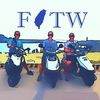
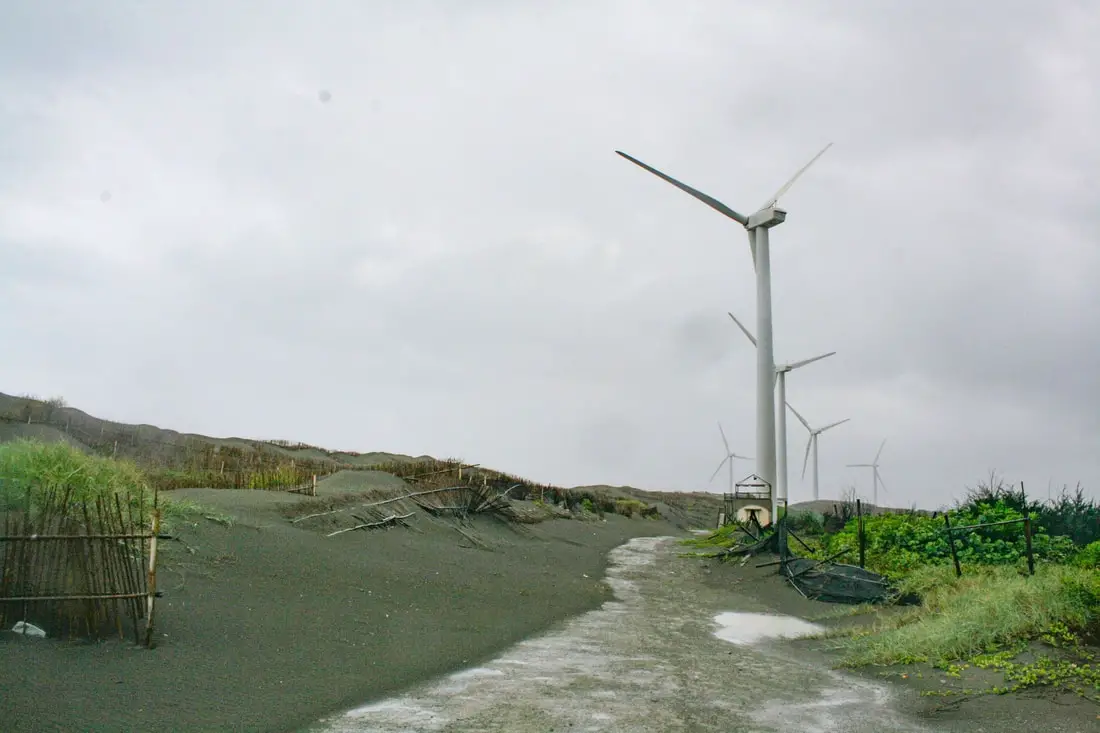
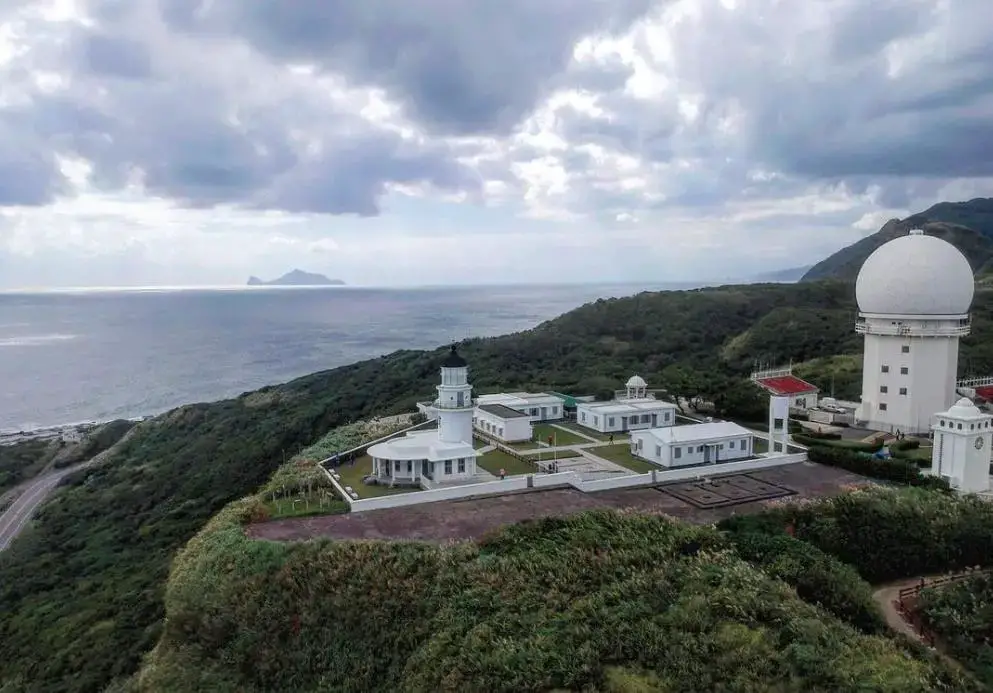
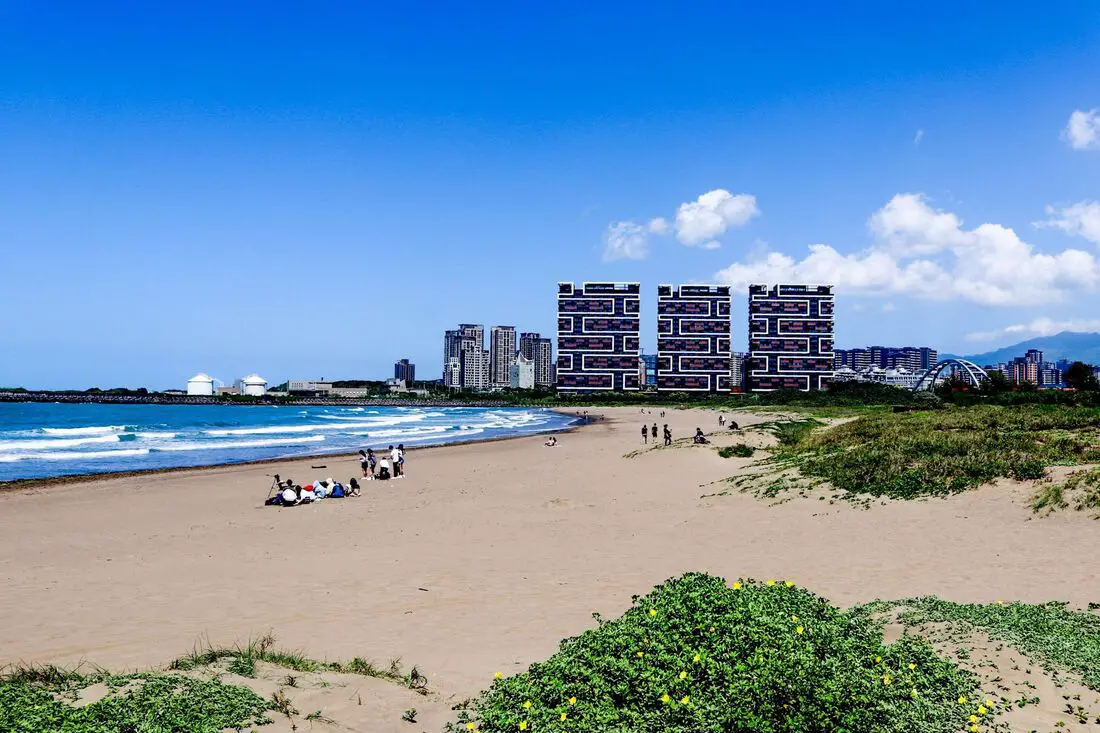
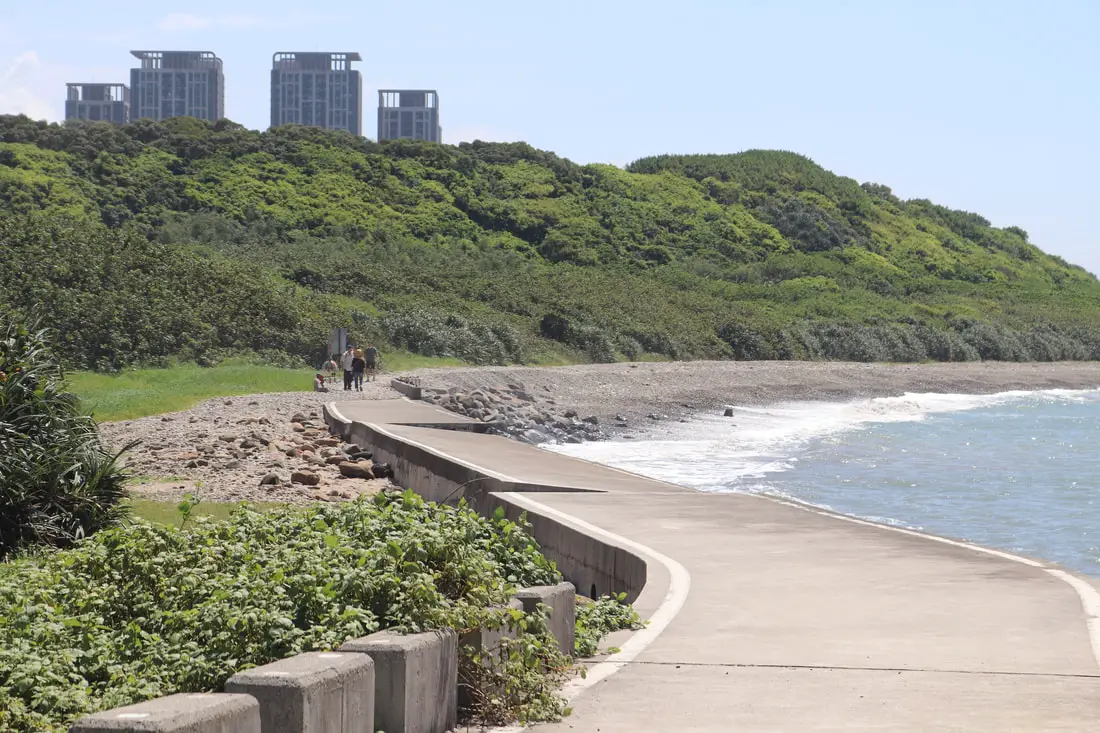
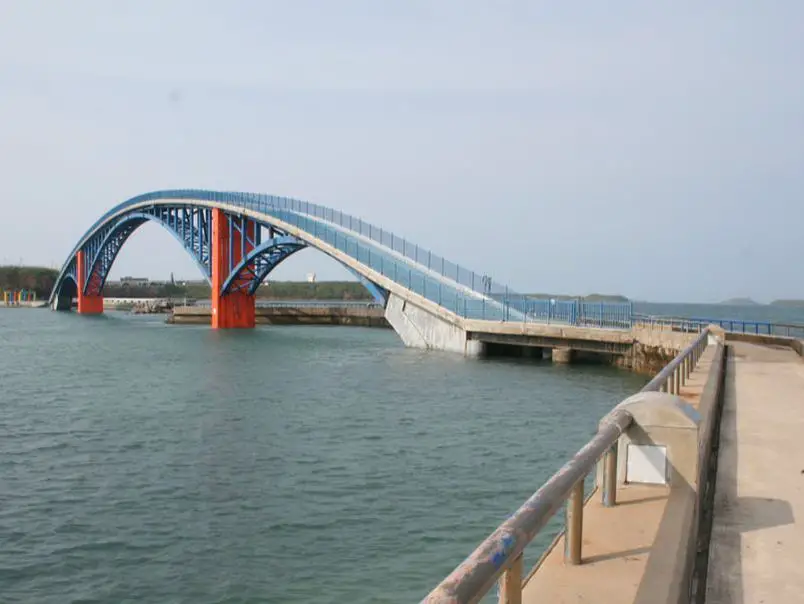
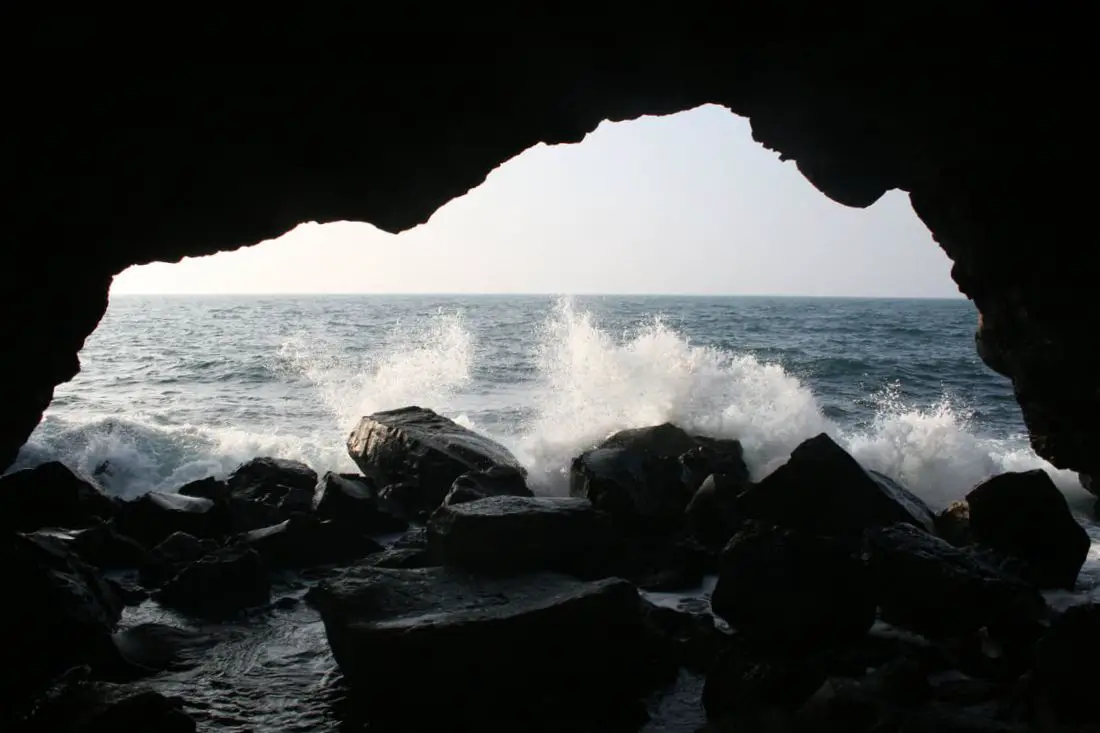
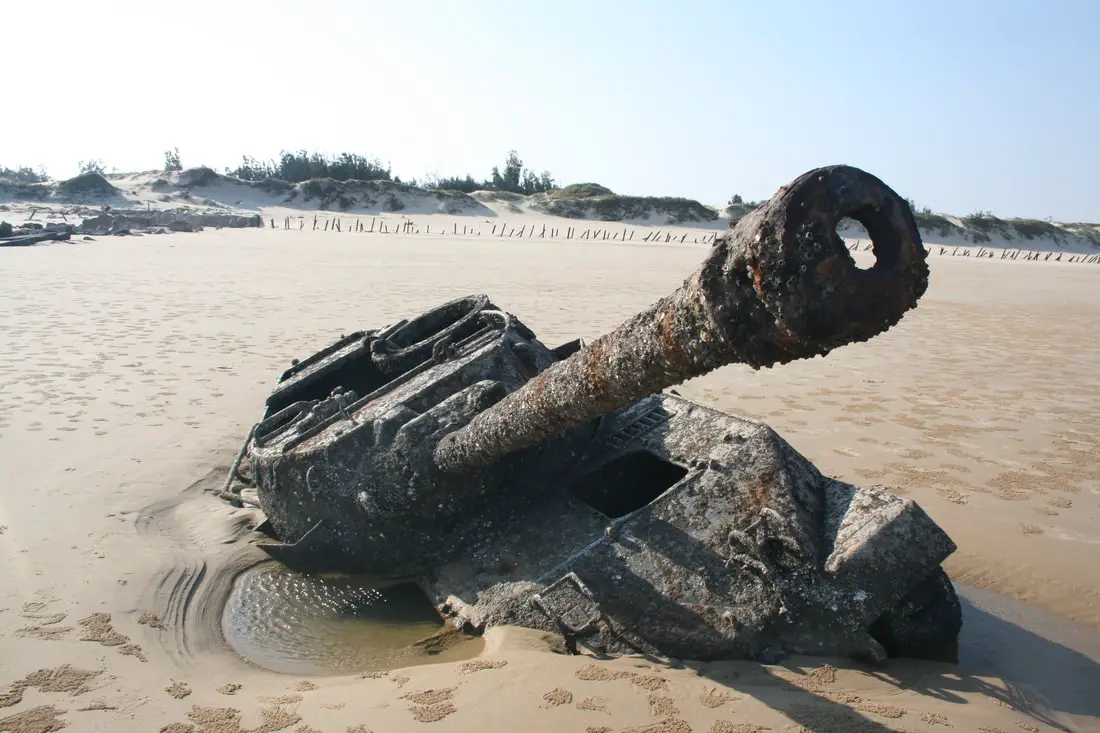
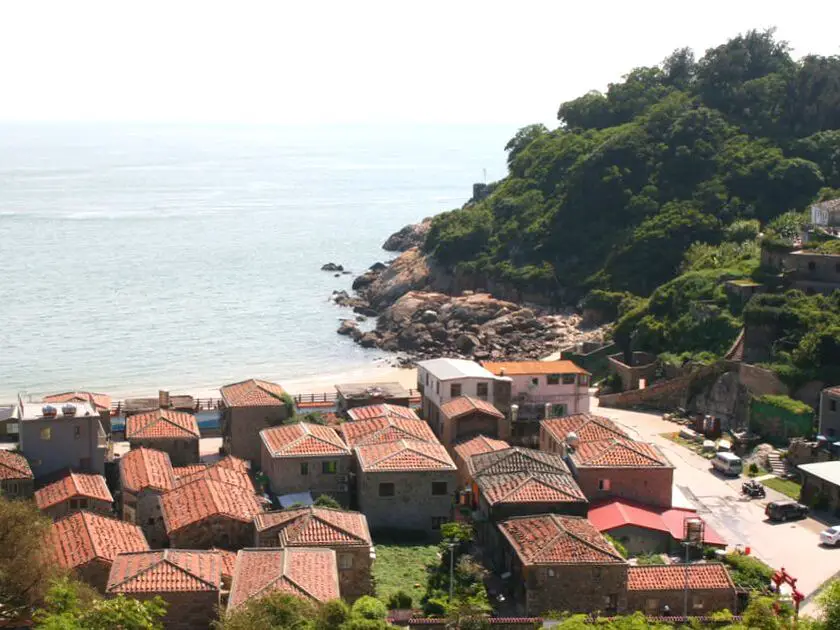
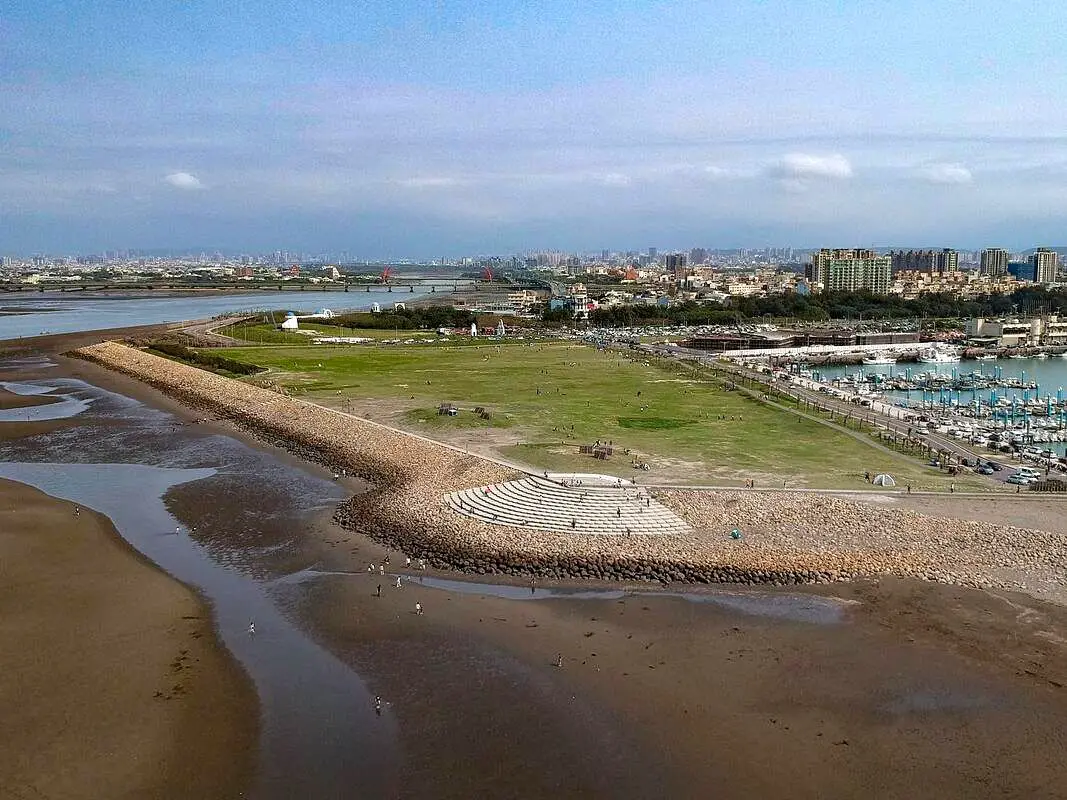
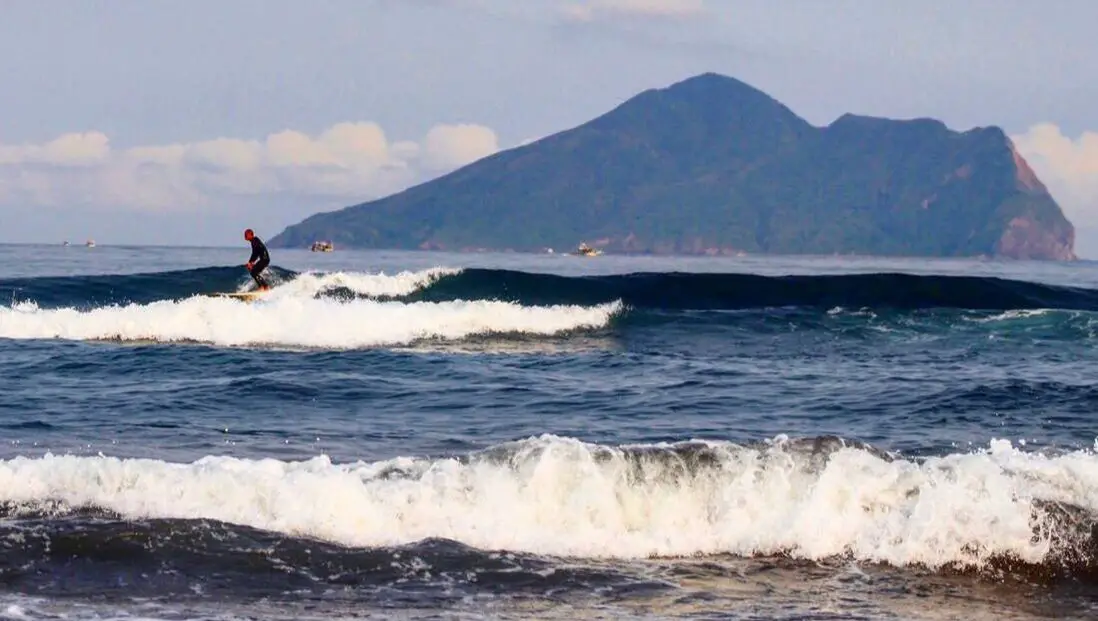
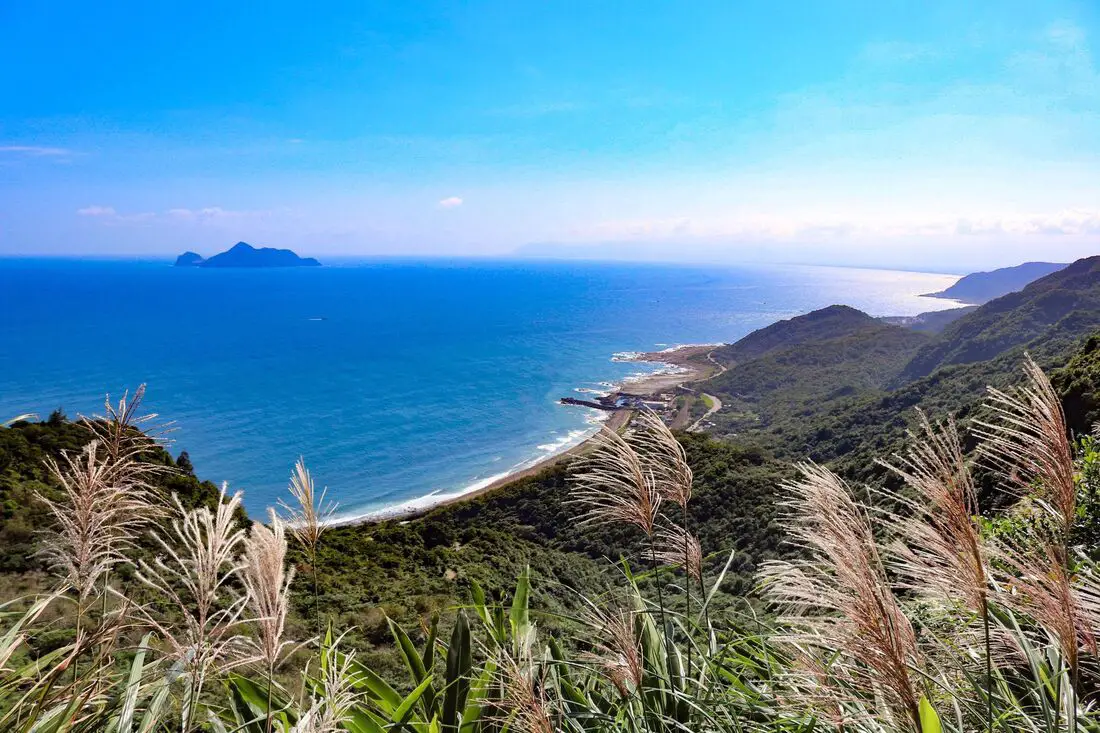
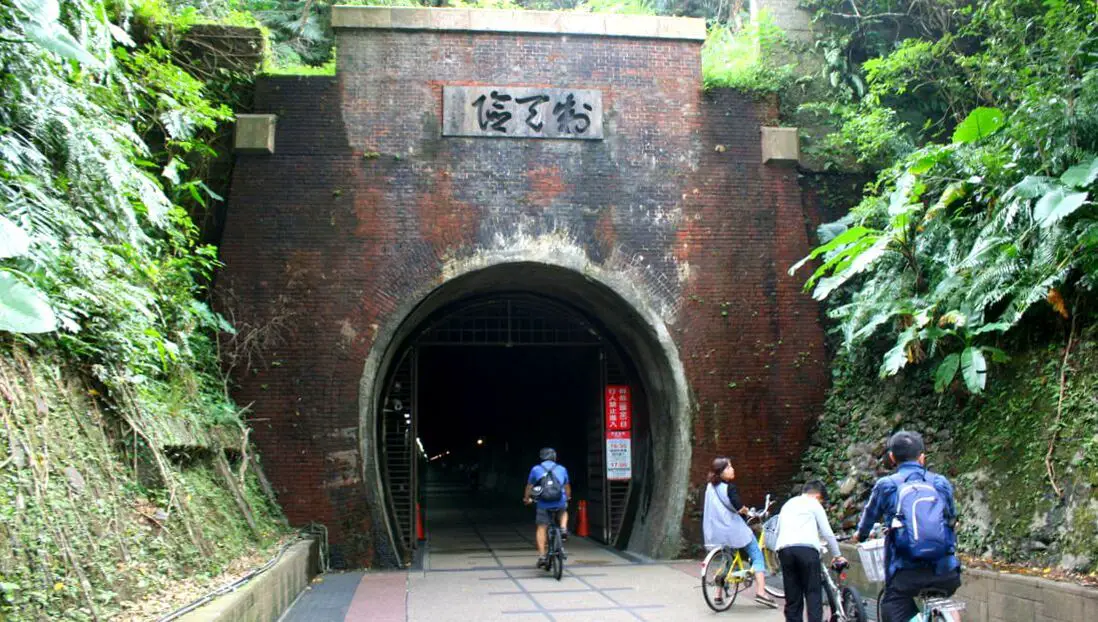
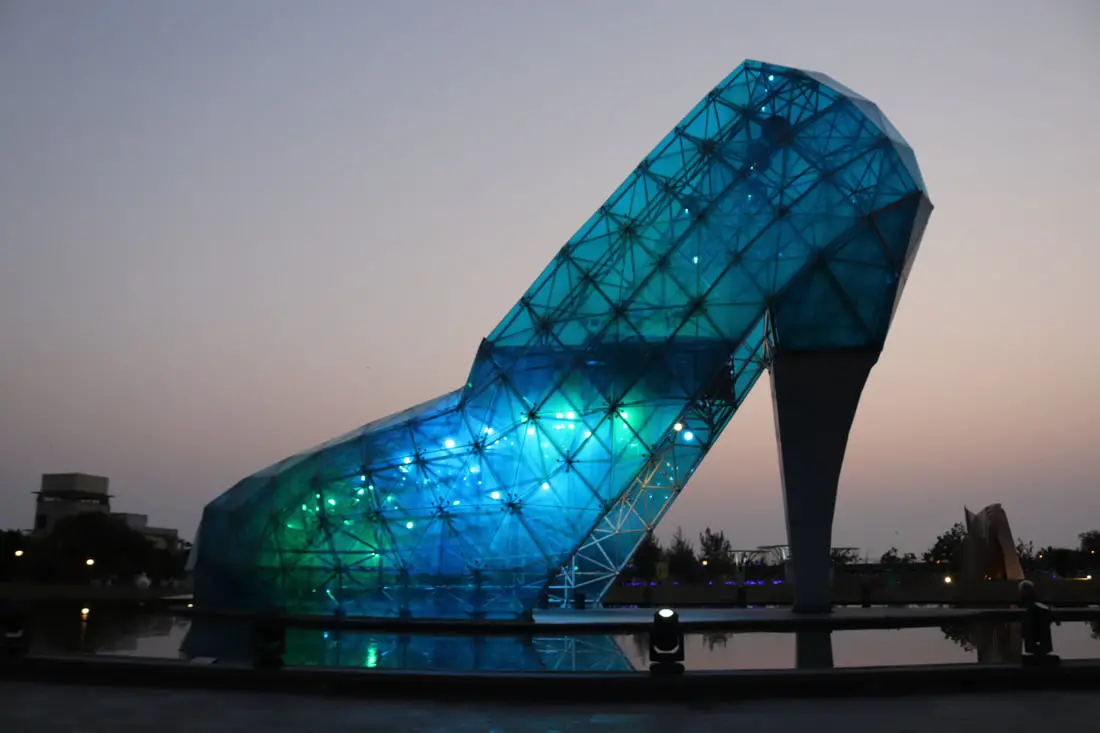
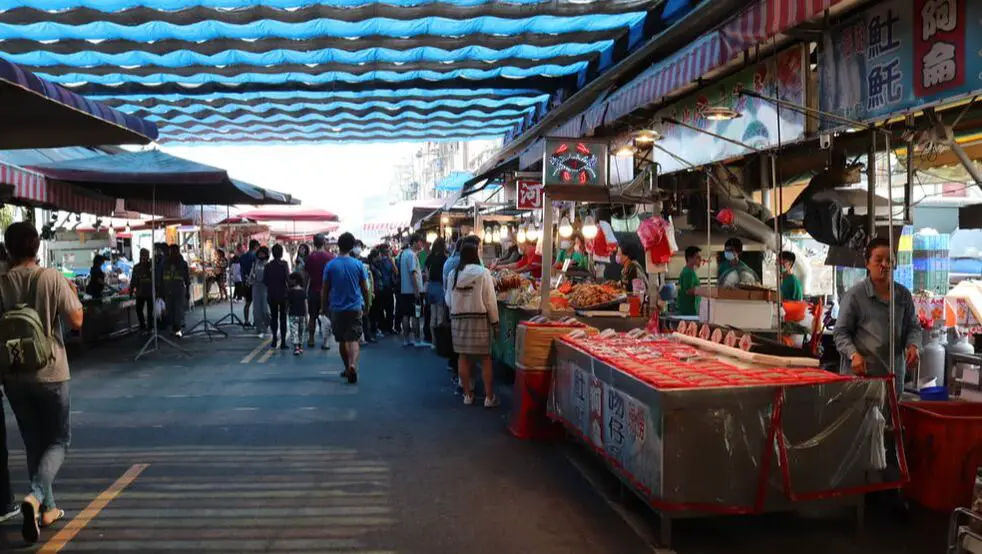
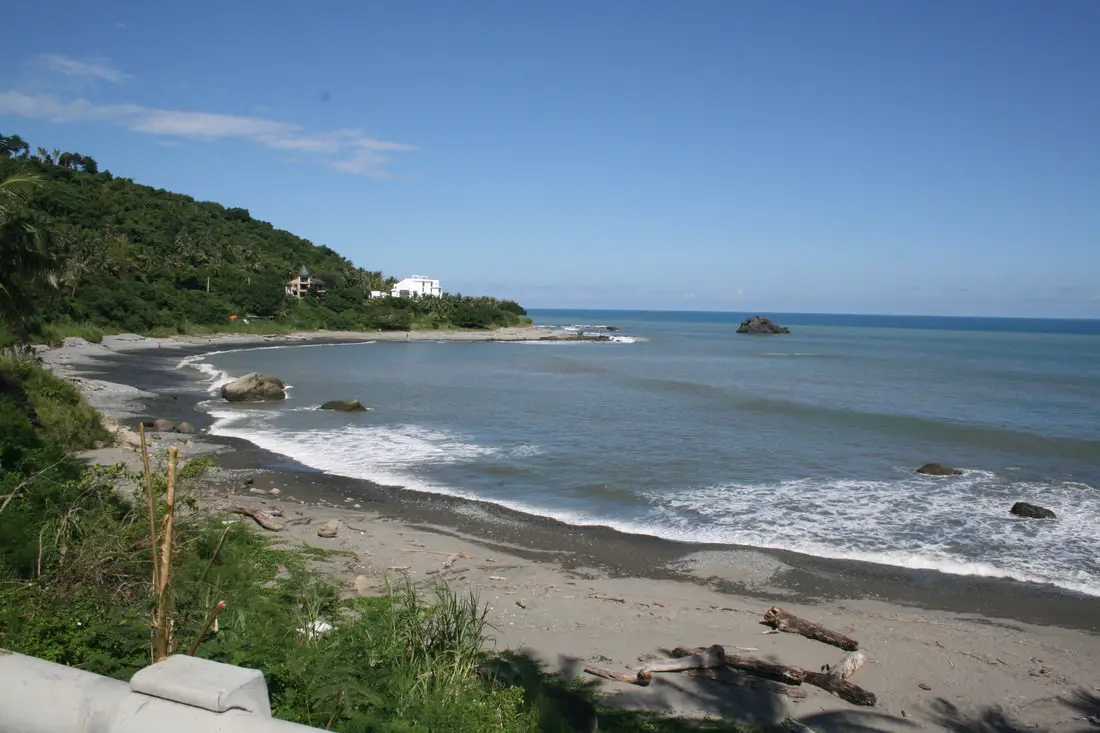
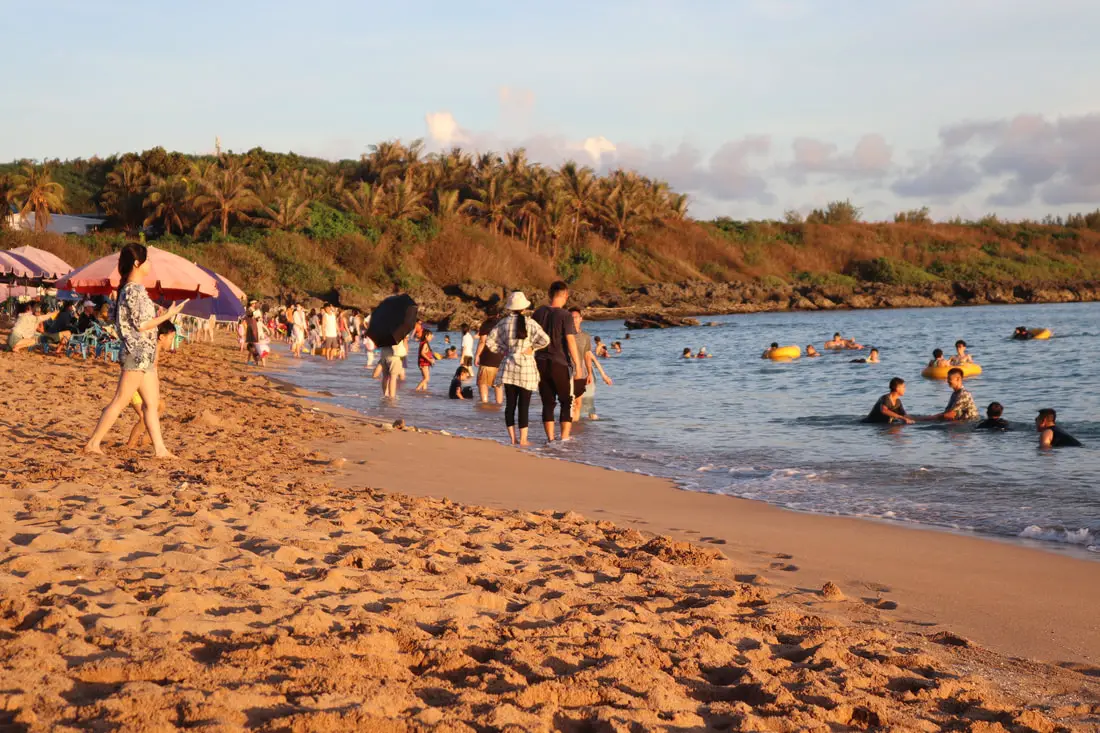
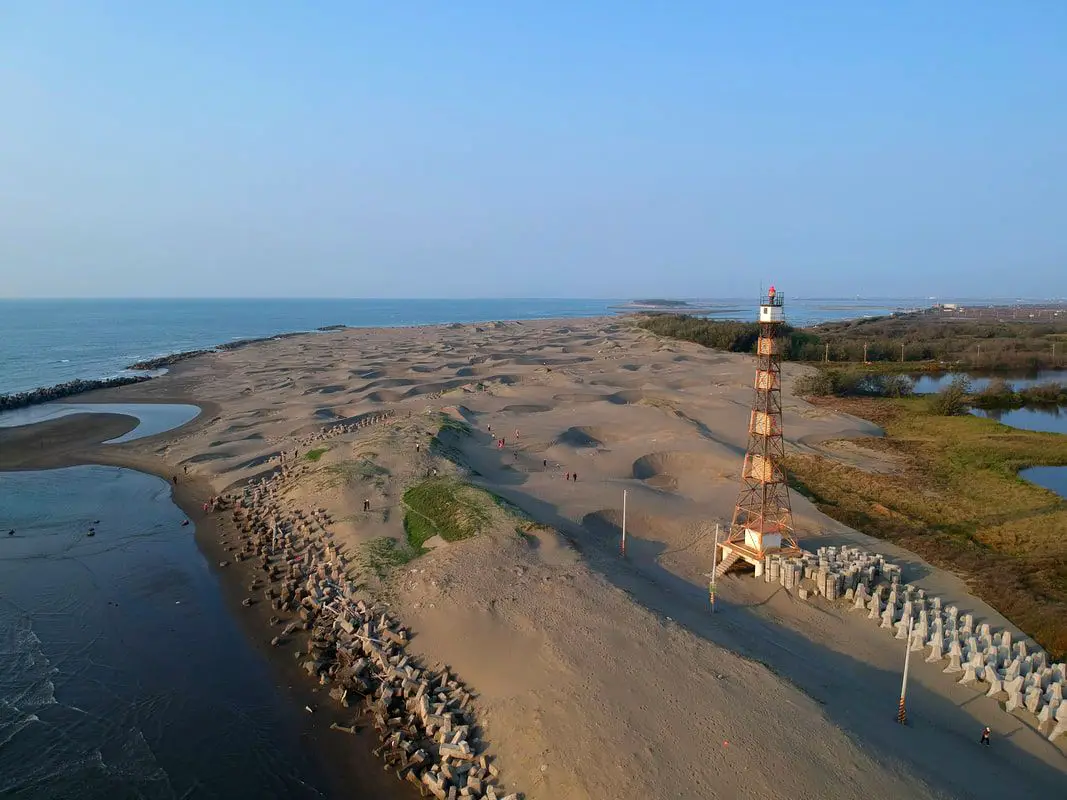
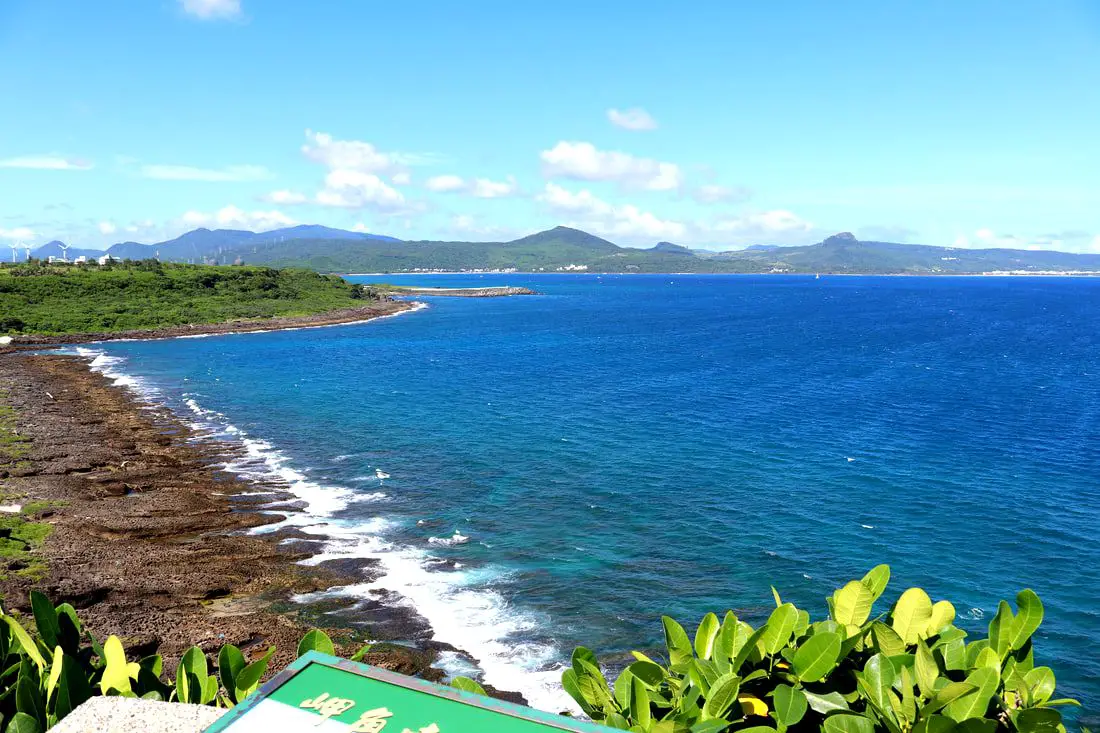
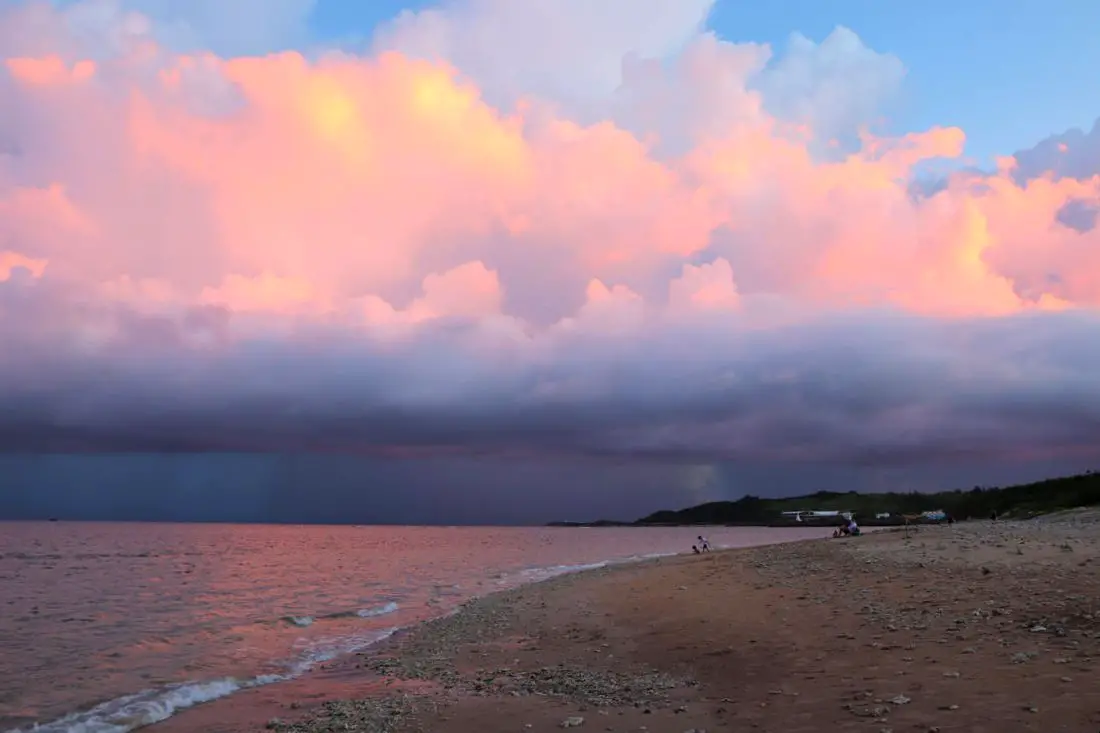
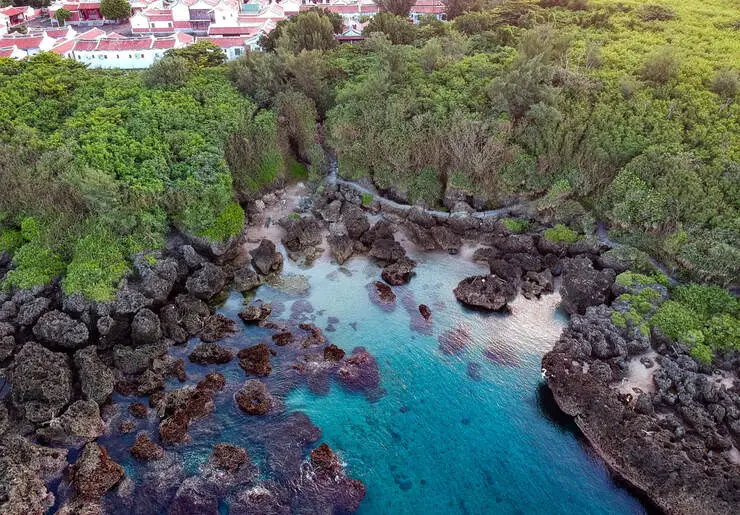
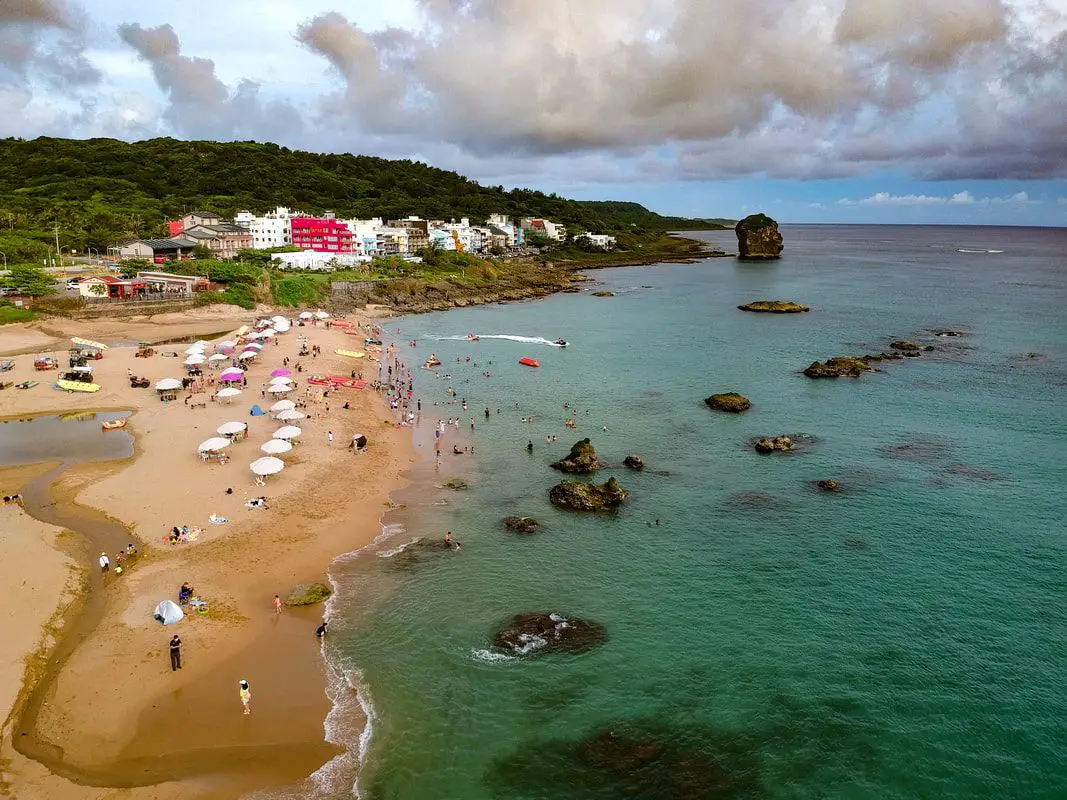
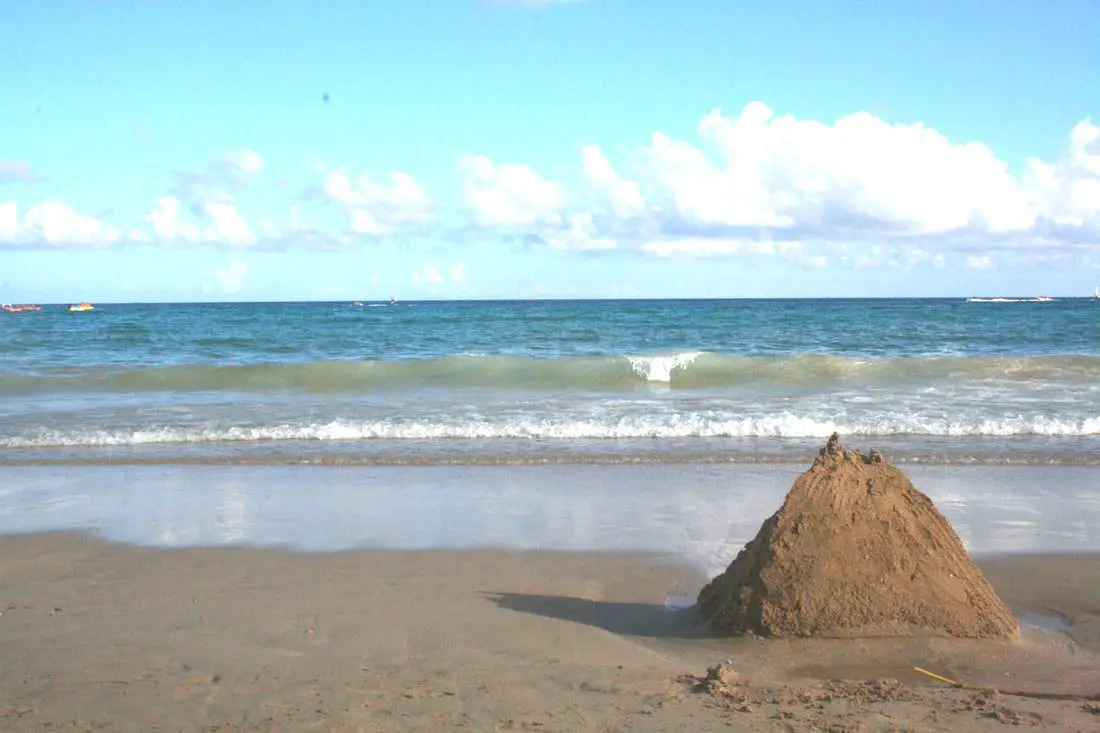
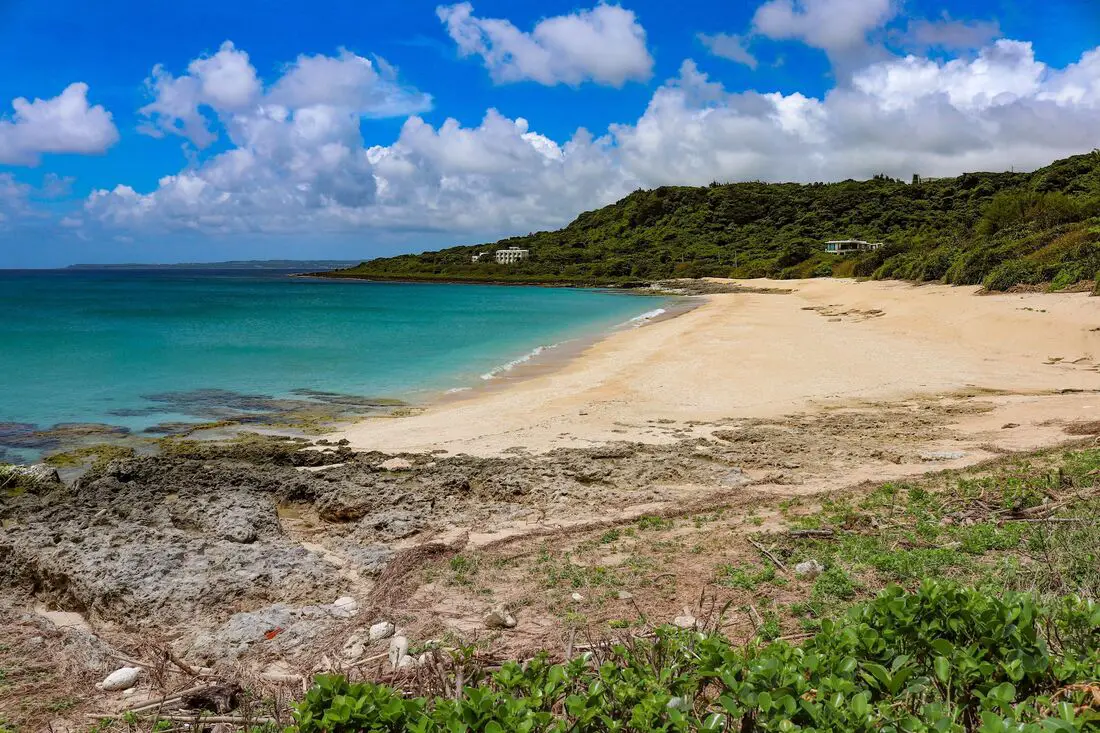

 RSS Feed
RSS Feed
